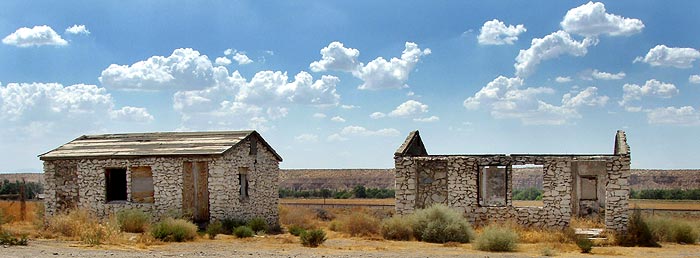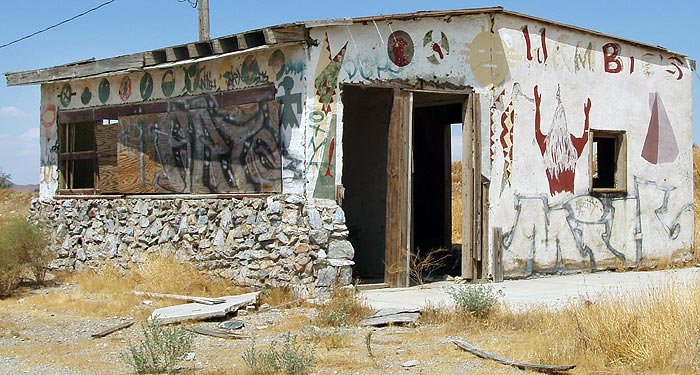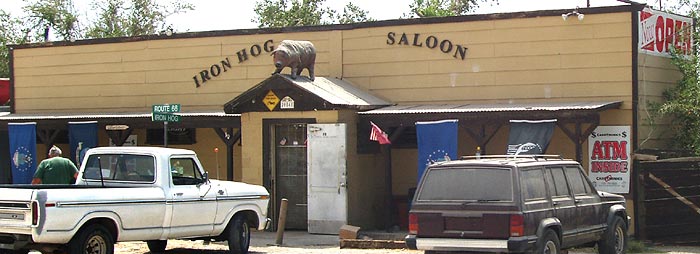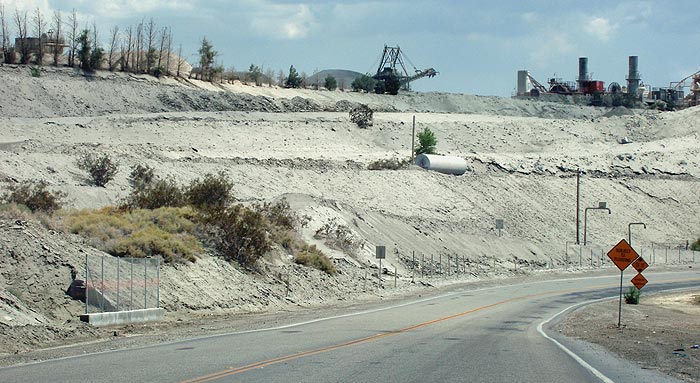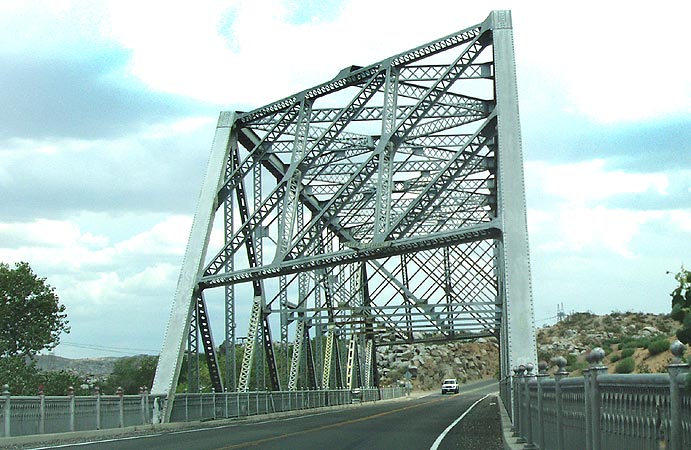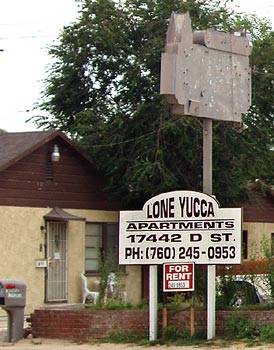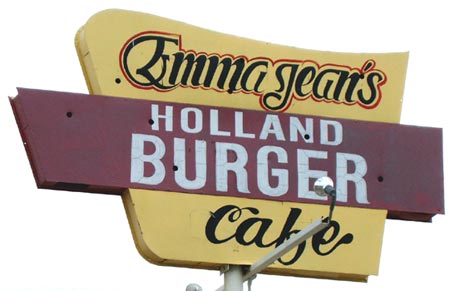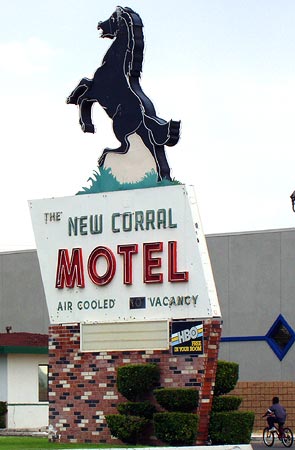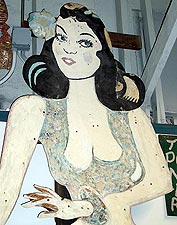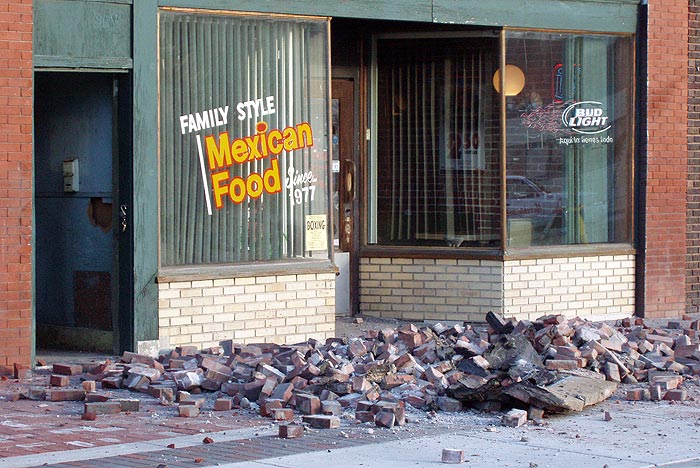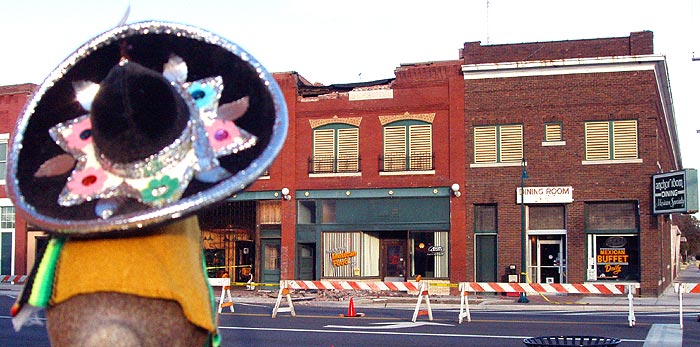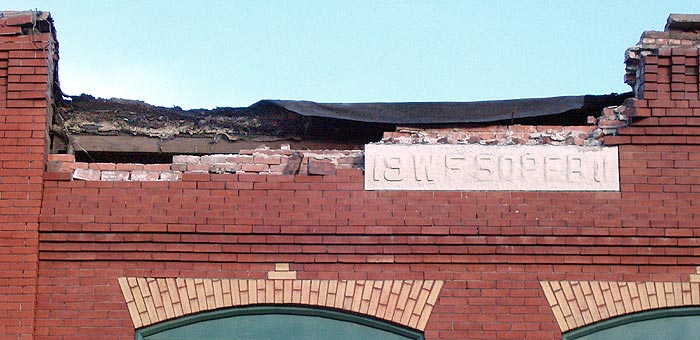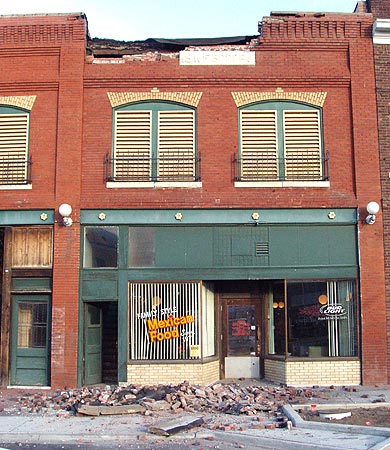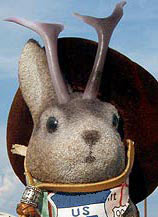Ace Jackalope enters the City of Angels on Route 66 and takes to the streets in his trenchcoat. He decides that the Tiki Theater, 5462 Santa Monica Blvd, Los Angeles, is not tiki after all, except for the sign, which comes complete with gang graffiti. It doesn't even have a "live nude show"; it's just a sad little urban porn theater.
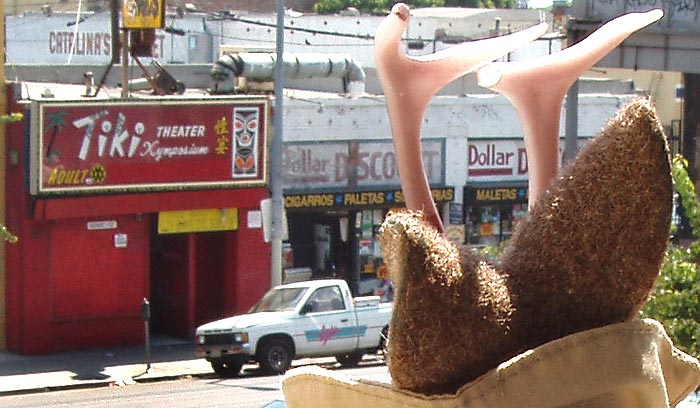
I couldn't find much on the history of the Tiki Theater; one comment at
cinematreasures.org, a website dedicated to classic theaters, suggests it used to be a silent film theater while another says it is a "store front theater" - a theater not built as such but converted from another use. A post to
tikicentral.com reports the Tiki Theater shows up in a video game called Grand Theft Auto San Andreas; The video capture in the post even shows the graffiti in the right places. A Los Angeles
blog recommends it as a place to take a date. I'm not sure there is enough Purell in the world for that.
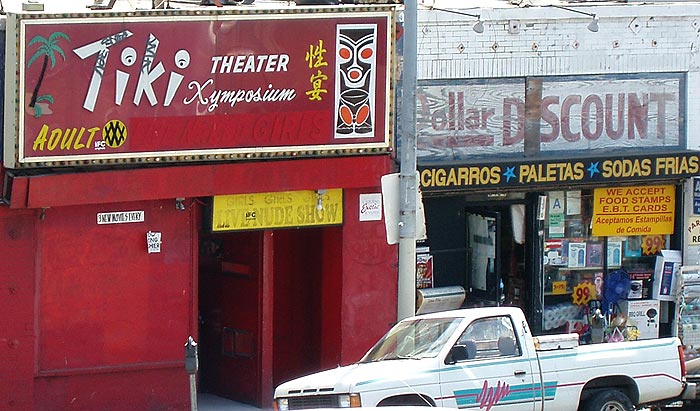
A note on my descriptions of place for anything in LA: In researching buildings in LA, I found that an address often has more than one listing of place: i.e. "Los Angeles" in one description and "Hollywood" in another. To clarify this, I am entering zip codes in the
USPS website to determine how to describe a location. Apparently, places like Hollywood exist as generally recognized districts, often with indefinate borders, and are not legal entities as towns would be. Whenever possible, I am going with the more specific district name because...well, its just more fun to type "Hollywood" than "Los Angeles."
Moving on west to West Hollywood, C.P. Three Prop House, at the corner of Bronson and Santa Monica Blvd, displays four huge replica moai, available to rent for your next Easter Island epic.
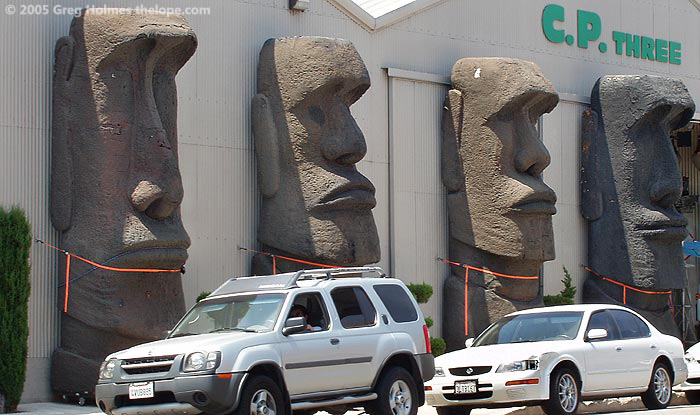
"Moai" is a term which describes the giant stone heads found on Easter Island; the island is called "Rapa Nui" by its indigenous inhabitants.
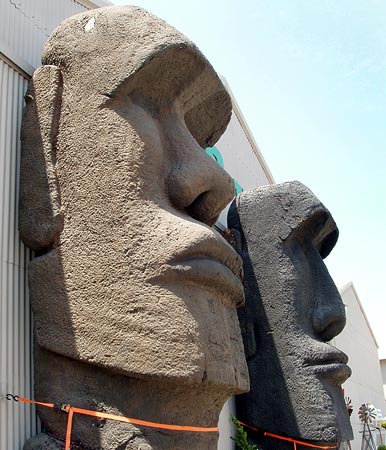
According to James Teitelbaum in his book, "
Tiki Road Trip", these moai were made for a "Laverne and Shirley" reunion special, but they were not used. An employee told me they were used in an Eddie Murphy movie, though he didn't know which one. The building is owned by Omega Cinema Props; it is used primarily for storage of large outdoor props and furniture.
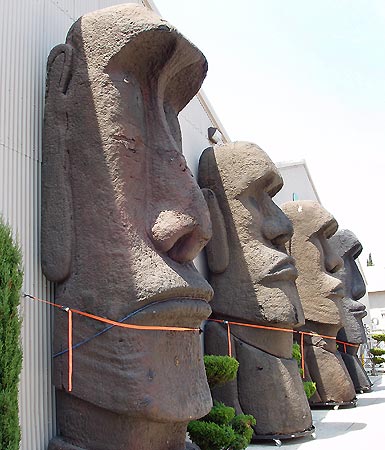
You can see the Hollywood sign in the distance, at right.

Contrary to what TV enthusiasts might assume,
Dan Tana's restaurant, 9071 Santa Monica Boulevard in West Hollywood, is not named after Robert Urich's character on "Vega$". The producers of the TV show liked the name and got permission from the restaurant to use it. If you like celebrities, this might be the place to go.
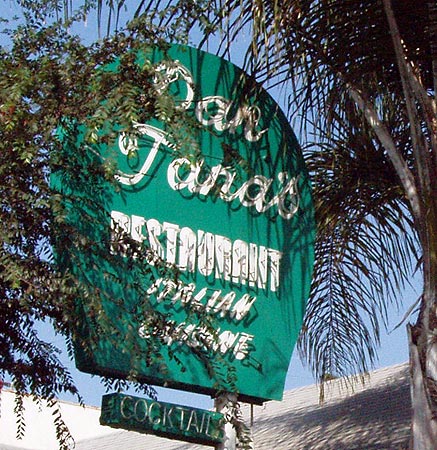
Route 66 cuts along the south side of Beverly Hills.
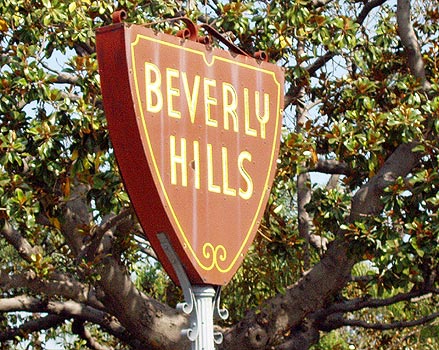 Trader Vic's
Trader Vic's in Beverly Hills, CA is the oldest tiki bar remaining on Route 66. Although its address is in the Beverly Hilton at 9876 Wilshire Blvd., the bar itself fronts Santa Monica Blv., hence the Rt66 connection. You can park in the hotel lot but its expensive and at the other end of the building from the bar; or, you can use valet parking.
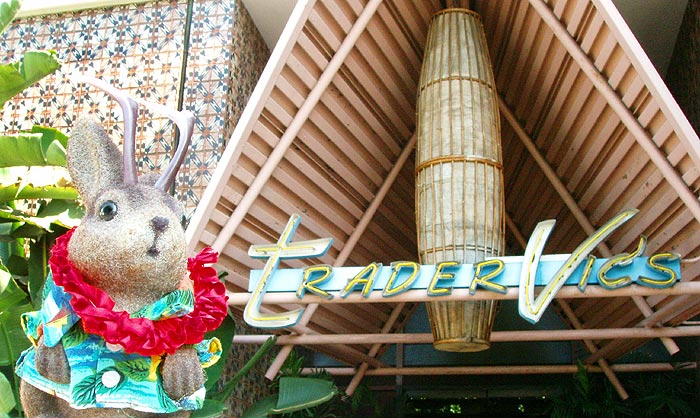
"So, what's this 'tiki' thing?", I am sometimes asked. This is not surprising since, judging from the slant of the email I receive, most of my readers are Route 66 afficianados and the only tiki bar left on Rt66 is this one. "Tiki" describes a sort of idealized Polynesia...Oceanic pagan statues, grass huts, "exotica" music, etc. The advent of air service to Hawaii and its later inclusion as a state, lusty James Michener novels set in the South Pacific, Thor Heyerdahl's real-life voyage on the Kon Tiki, WWII soldiers returning from the Pacific, desire for escapism from a drab world...all of these things contributed to the rise of a style that would reach maturity with the inclusion of pagan-ish statues, popularly called "tikis", in the mid-20th century. Tiki isn't archeology or sociology, though...
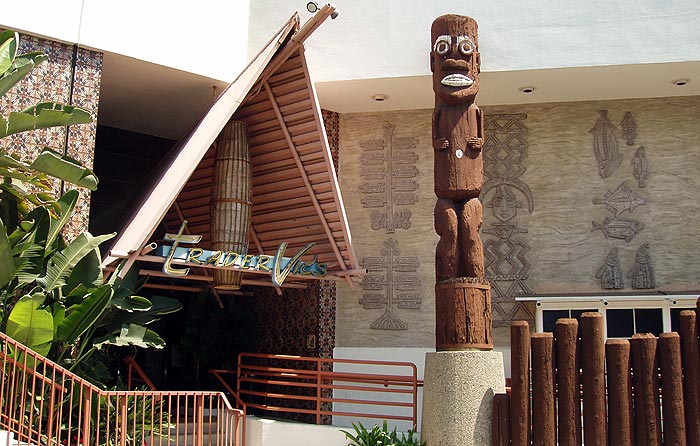
...Tiki is fantasy; it's a mix of imagery that is occasionally dead-on but more often portrayed Polynesian culture about as well as Gunsmoke portrayed the old west or Flash Gordon foreshadowed the Apollo program. That inaccuracy doesn't matter to its afficianados, though; they accept and embrace it as part of the appeal. Author Sven Kirsten in his "
The Book of Tiki" coined the term "Polynesian pop" for all of this.
Although tiki was quite the thing in the mid-20th century, it waned back in the late 1960's when grass huts reminded one more of Pnom Penh than paradise. (I wonder if it'd be similar to trying to sell an Arabian Knights theme right now.) By the 1980's it was quite rare to see a tiki-themed establishment and a density map would show the only dark spot as Southern California. In the past few years there has been a revival of tiki popularity, thus, the trappings of an elusive paradise are as close as the local Spencers and Target stores.
A common element of tiki architecture was the upswept A-frame which was adapted from Polynesian and South Sea cultures. This trend coincided with the popularity of "googie" or space-age architecture, which often employed similar upswept forms.
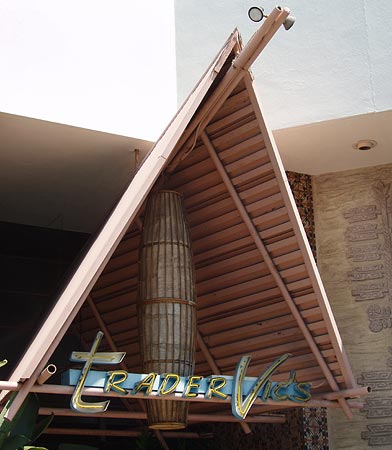
Polynesian cultures often used carved representations of gods. "Tikis" in tiki bars were sometimes authentic representations from these cultures, but were more often fanciful adaptations. The one outside Trader Vic's in Beverly Hills is rather plain, if you ask me; I'll have better examples in the coming weeks as I post other LA tiki establishments, but for now, more elaborate examples can be found at
Kon Tiki in Tucson, AZ.
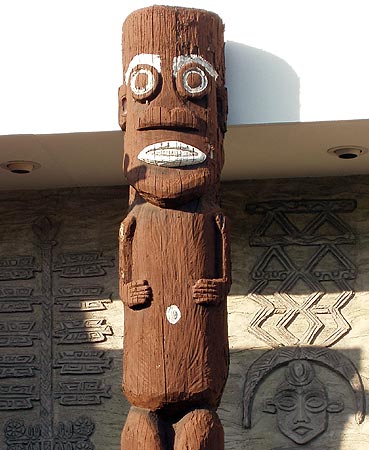
This Trader Vic's, built in 1955, is part of the chain by the same name that was founded by Victor Bergeron in the 1930's. Bergeron was in interesting character; after visiting other South Sea-themed establishments, he re-christened his restaurant, Hinky Dinks, into Trader Vic's...and re-invented himself in the process. Thus, a wooden leg gotten as the result of childhood tuberculosis became the outcome of a battle with a shark.
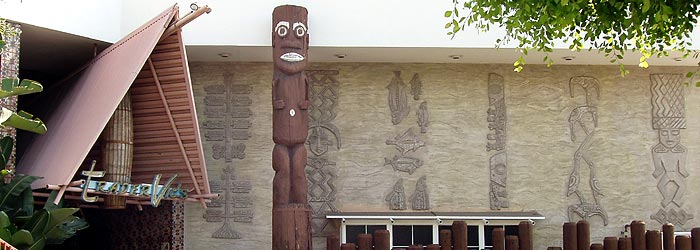
One of Bergeron's claims to fame is the invention of the Mai Tai, a rum-based drink staple of tiki enthusiasts. If you order one today, be sure to have it "made the old way" to get the vintage, authentic recipe.

Once upon a time, Trader Vic's sold Mai Tai rum in one of the coolest containers that ever held anything; it was called "Mai Tai Joe" but that name was little-known to recent-year collectors who nicknamed it the "suffering bastard" decanter, after a drink served at Trader Vic's.
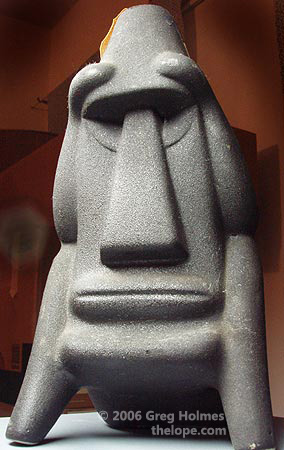
Trader Vic's still sells tiki mugs along with your drinks, but nothing like this.
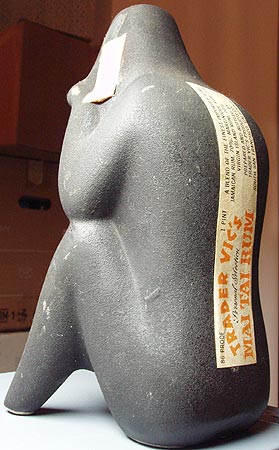
Many tiki bars served drinks in custom mugs. This older Trader Vic's specimen is not, strictly speaking, a tiki mug as it has no tikis on it, but it does have a strong element of Polynesian pop - a man relaxing in the presence of barrels of rum and scantily clad women. I doubt many American men actually experienced this.
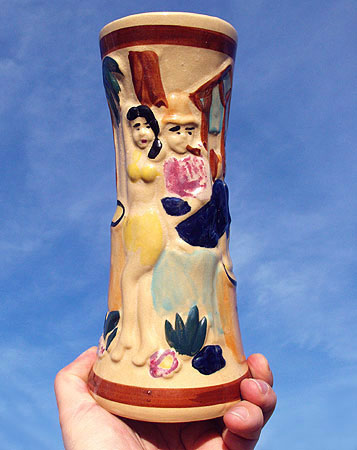
For the past few years, tiki mugs have been popular enough as a collectible that they are manufactured new and sold as a product in and of themselves, no longer needing any association with a particular bar.
Swizzle sticks were often utilized as advertising by bars, and tiki bars were no exception. Trader Vic's has long used the "Menehune" as a symbol. In Hawaiian lore, Menehunes were mythological beings analogous to faeries. At Trader Vic's, they were trinkets to sell drinks, and still are. I got these swizzles there this past August.
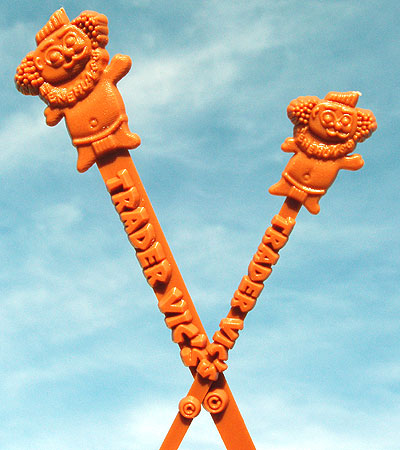
This was quite a bit more upscale than any tiki-themed establishment we'd visited previously. I took a couple of pictures inside but was immediately, though politely, told to put the camera away. I saw only one tiki inside, but my look around was brief. A very well-dressed couple who had emerged from a limosine seemed alarmed when they saw my camera; I guess they have a problem with paparazzi here. Author
James Teitelbaum advises: "If you come for dinner, remember that you are in Beverly Hills. You will be expected to show up dressed nicely; your Aloha shirt will not be considered festive." He's right, I think; judging from the dress I saw inside. Ironically, I was wearing a shirt with a pattern representing classic Trader Vic's tiki mugs.
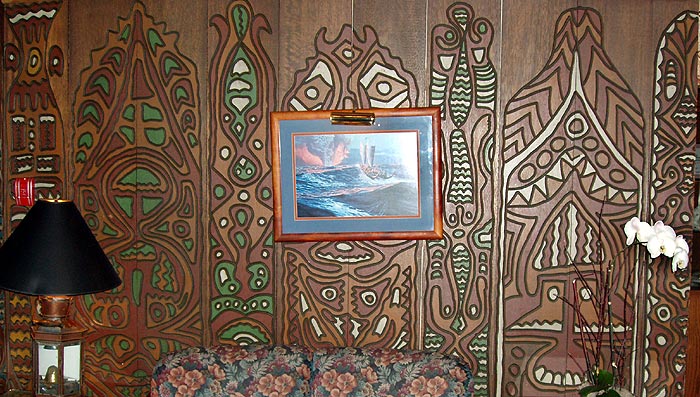
This particular Trader Vic's was once owned by Merv Griffin and is another place one might be prone to see celebrities, especially vintage ones. An amusing account of a Trader Vic's dining experience can be read
here. If you are of a mind to visit this Trader Vics, you might want to do so soon; I've seen no authoritative sources to back it, but there is a rumour that the Hollywood Hilton wants to tear it down and build a highrise tower in its place.
Aloha from Ace, known in some circles as "Tikijackalope."
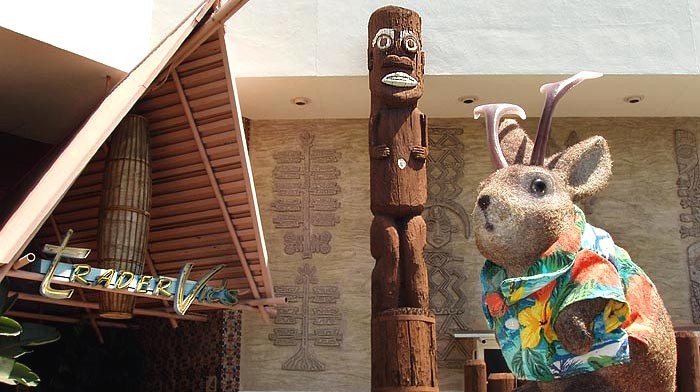
These last few pictures were taken from a moving car; by this point in the trip we had other priorities and were dealing with LA traffic as we drove the last few western miles of route 66. These signs at 10423 Santa Monica Blvd in West LA are prime examples of signage that used to be really cool, but are only moderately so in their current states. Currently, the building houses Bel Air Caviar.
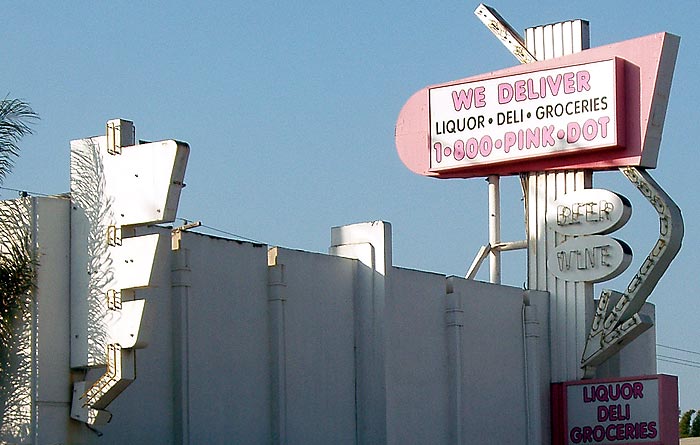
This building was blindingly white and when I researched it, it turned out to be Mormon, of course. It is the Los Angeles temple of the Church of Jesus Christ of Latter-day Saints, 10741 Santa Monica Blvd., dedicated in 1956.
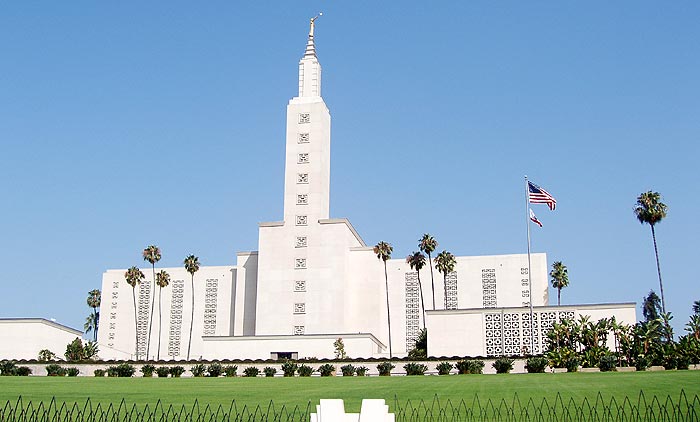
Royal Santa Monica Motel, 10811 Santa Monica Blvd., West LA, seems to be one of the less expensive motels in its area at $55 per night, single occupancy.
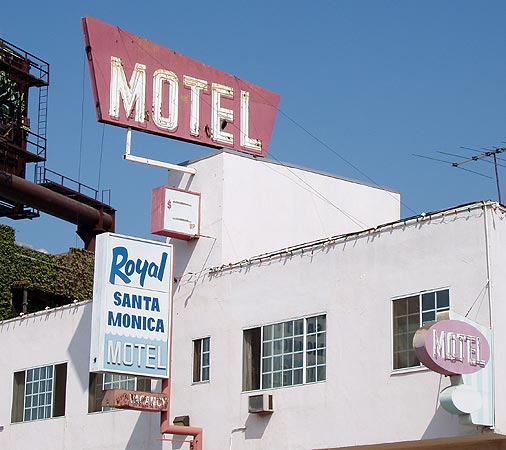
Do all the guys who pull shopping carts on the street have cell phones here?
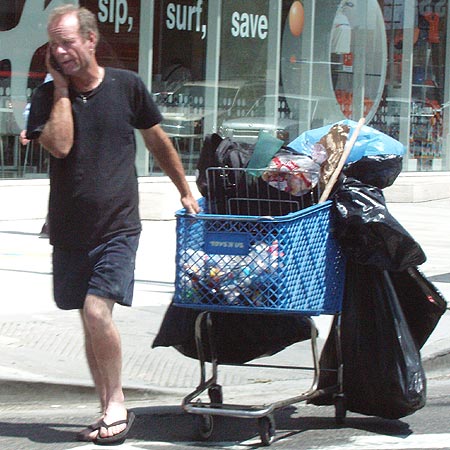
The
NuArt theater 11272 Santa Monica Boulevard, West Los Angeles, CA, is a very active and well-spoken-of art house film theater.
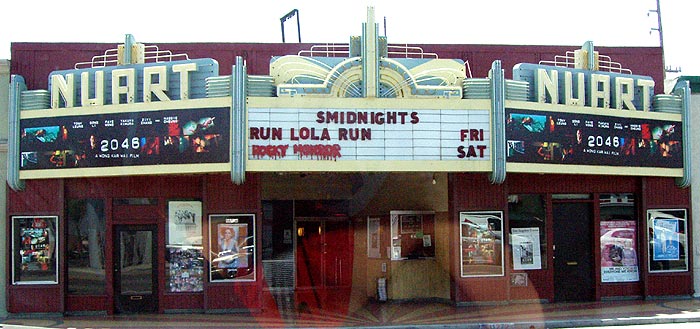
This apparent soda fountain on Santa Monica Blvd looks like a subject for a future visit.
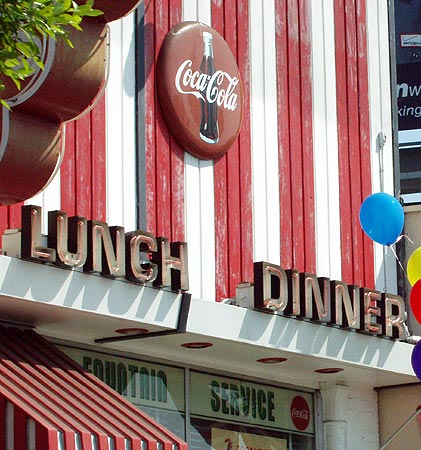
The sign for The Village Motel, 2624 Santa Monica Blvd, Santa Monica, isn't spectacular, but it was above par for the backlit plastic banality of the area.
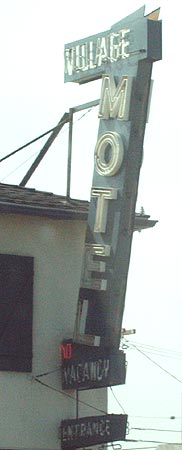
It is worth noting that, as far as elaborate neon signage along Route 66, I think there is more of the really big, cool stuff in towns like Gallup, NM, than there is in all of LA proper. That isn't to say LA is devoid of cool googieness - quite the opposite, in fact. There is still plenty, despite the evils of sign ordinances and such, it's just that most of it isn't on Santa Monica Blvd., which was Route 66 in LA. We visited a few LA-area googie and tiki sites, and I'll post those in the coming weeks. Wait til you some of the mid-century architecture!
For our entire 2005 Rt66/I-40 trip, see:
Joplin to AmarilloAmarillo to HolbrookHolbrook to WinslowLa PosadaGrand CanyonSeligmanwestern AZFrom the California border onward, we stayed to Route 66:
Colorado River crossingNeedlesNeedles to FennerFenner to AmboyAmboyAmboy to BarstowBarstowBarstow to VictorvilleVictorville - California Route 66 MuseumVictorville to RialtoRialto Wigwam MotelOuter Los AngelesLos AngelesSanta Monica PierOther posts concerning California:
The Future was so Cool in 1961Goodbye, Sam's Seafood
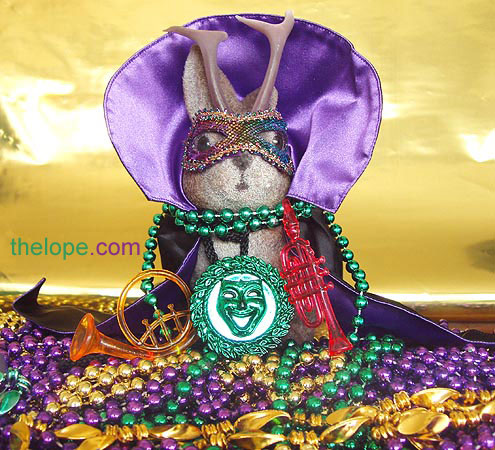
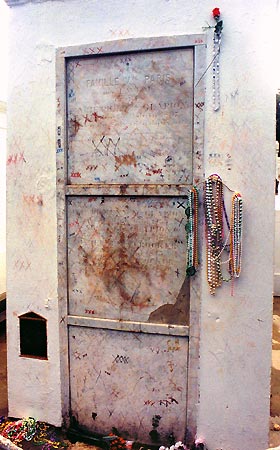
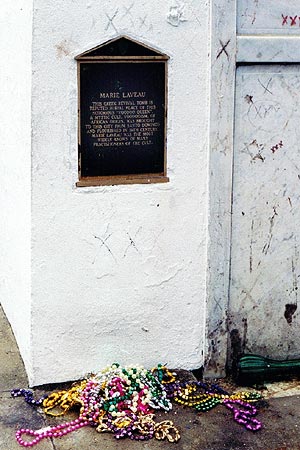
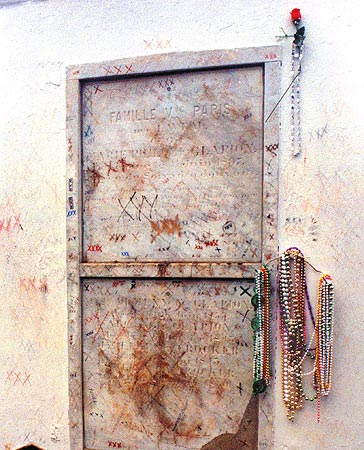
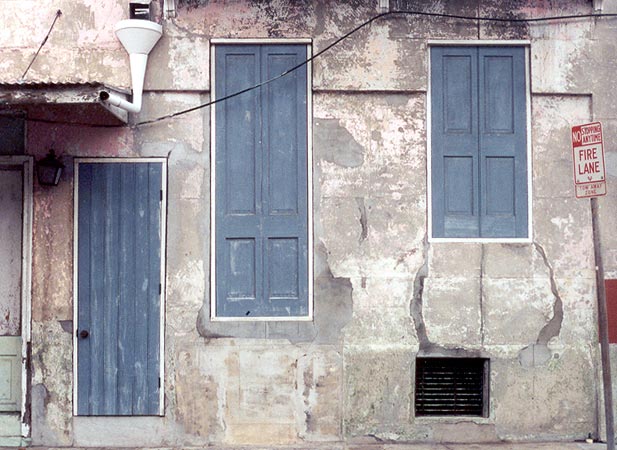



























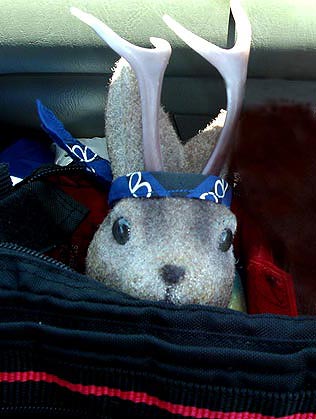
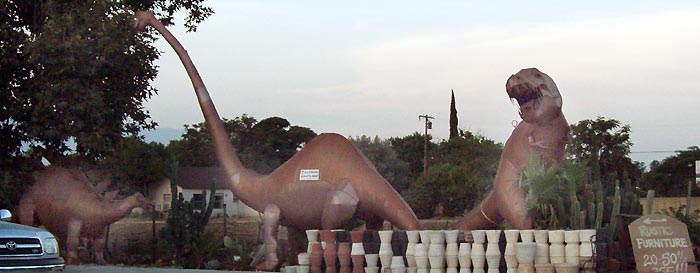
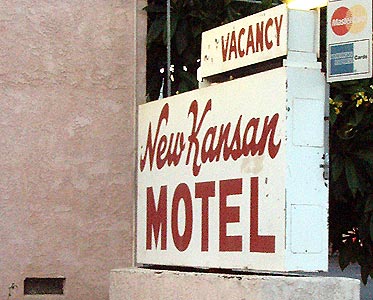
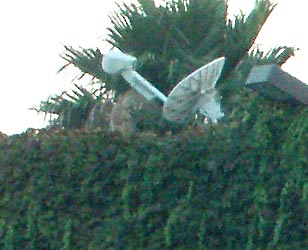
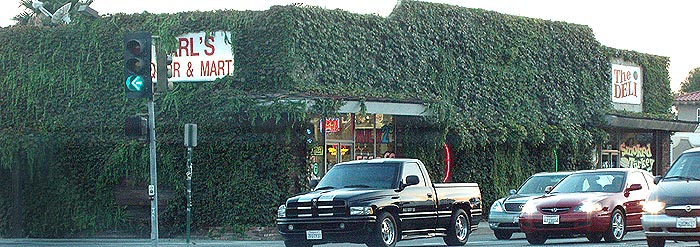
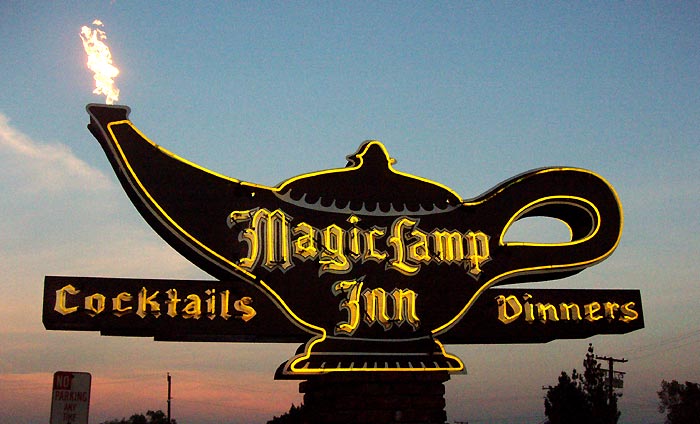

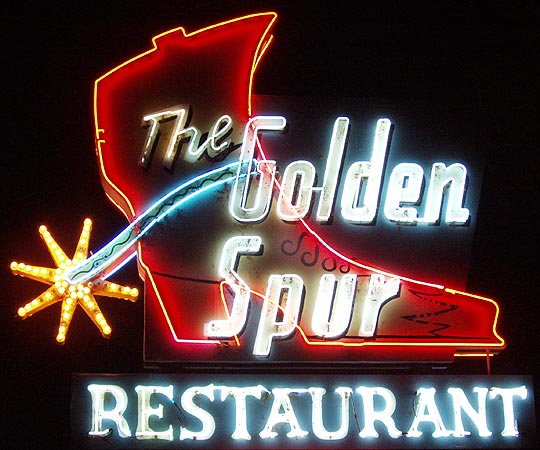
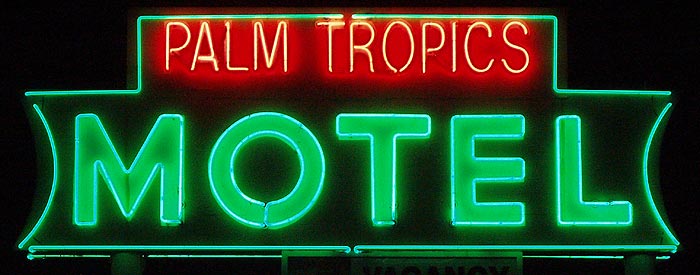
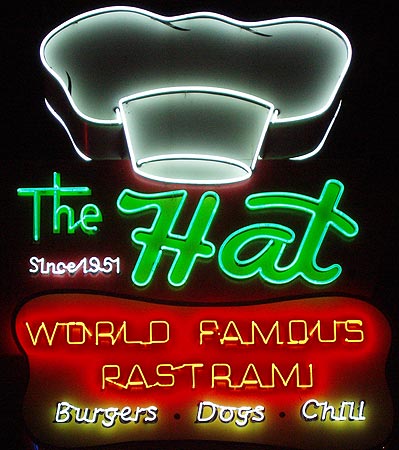
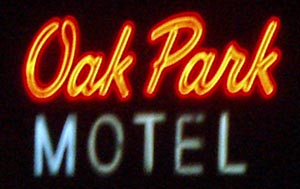
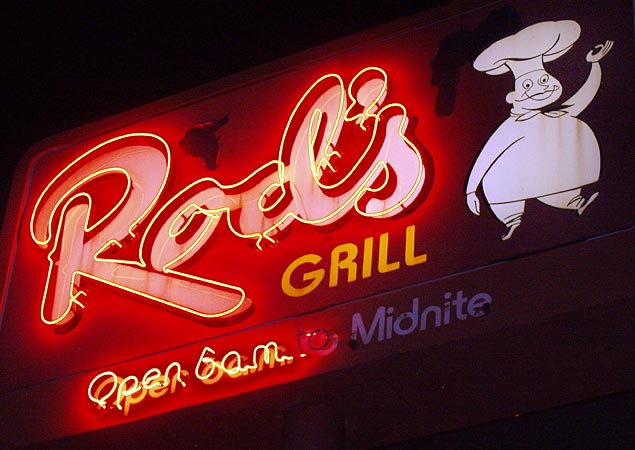
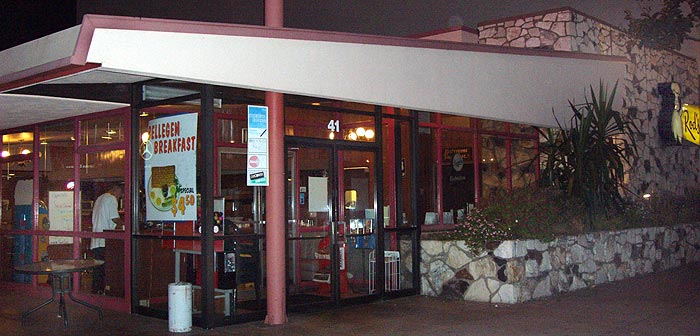
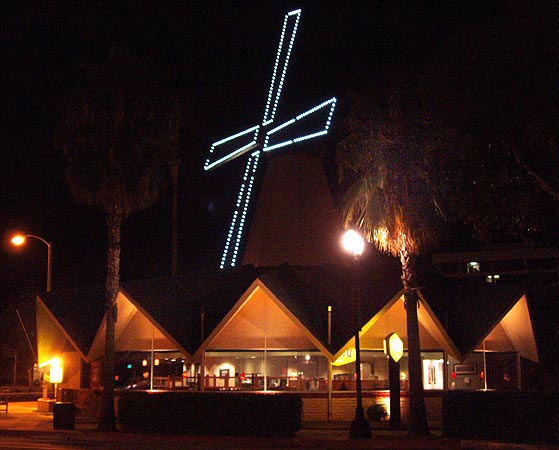
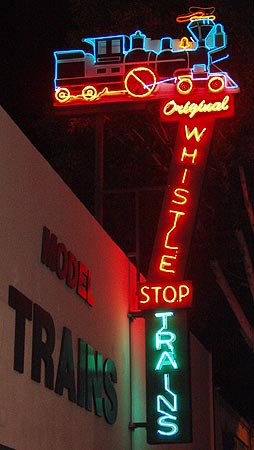
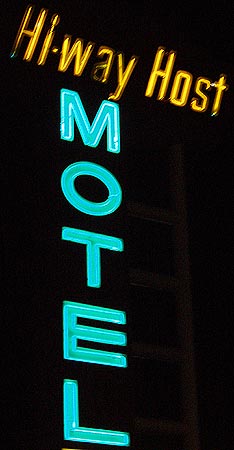
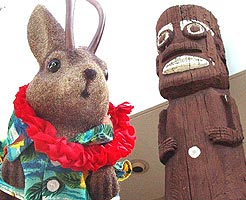
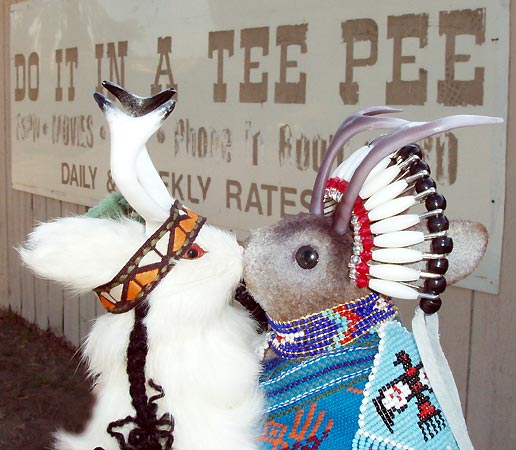
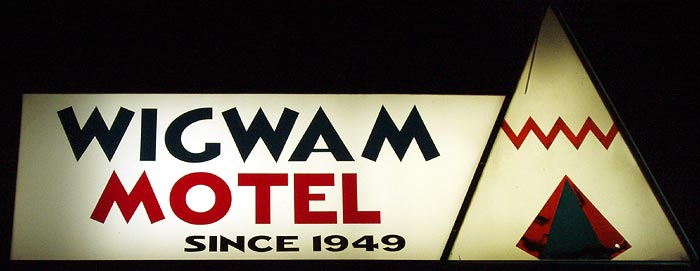

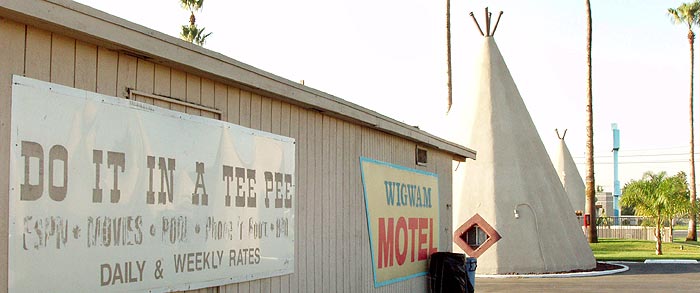
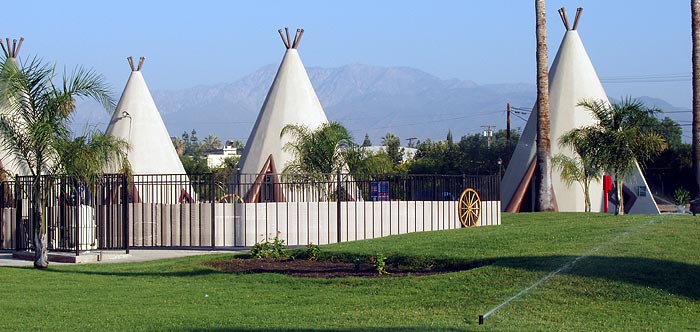
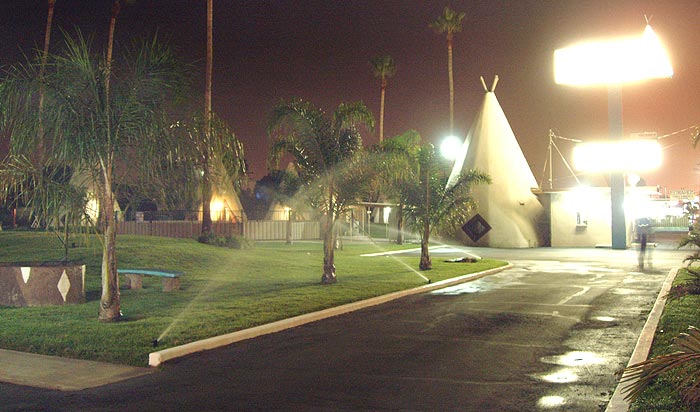
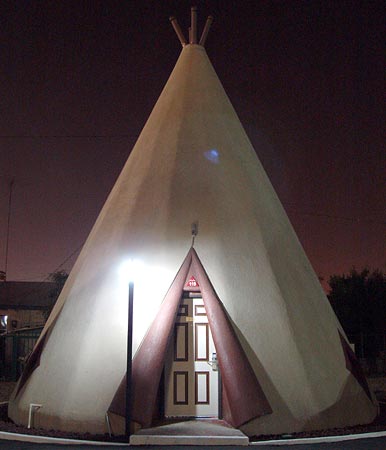
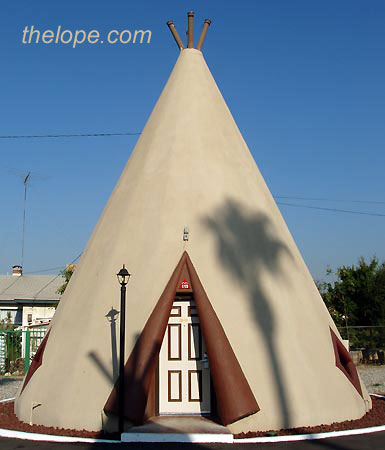
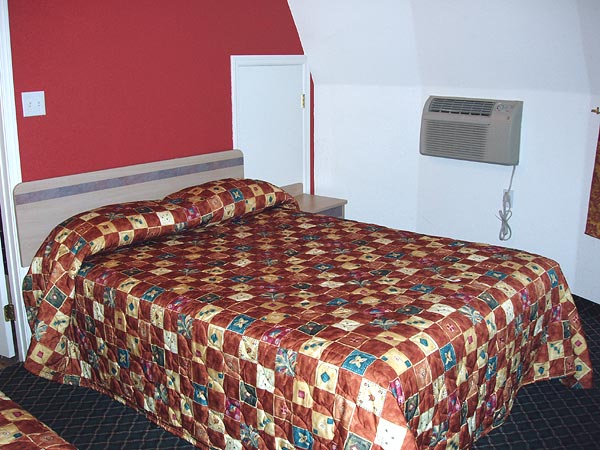
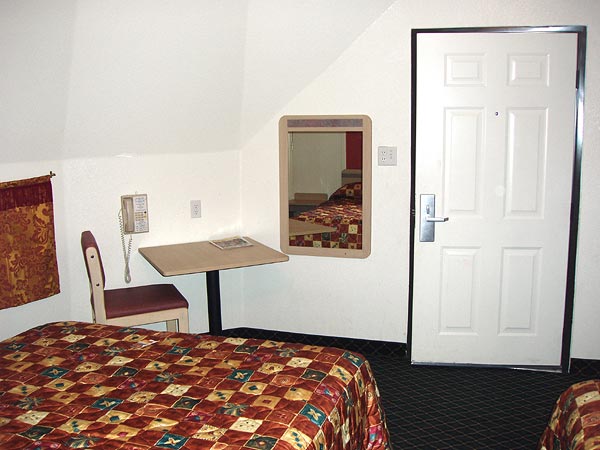
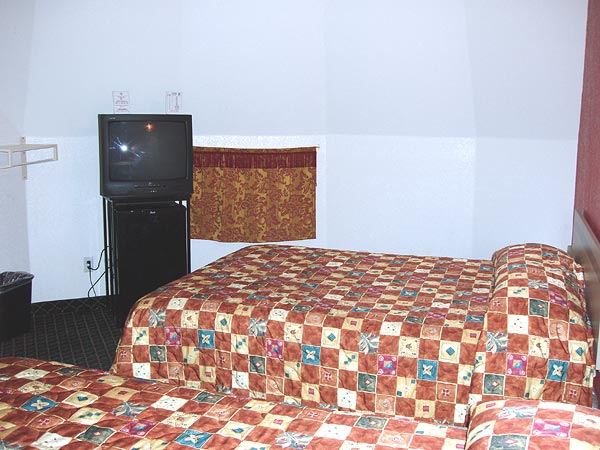
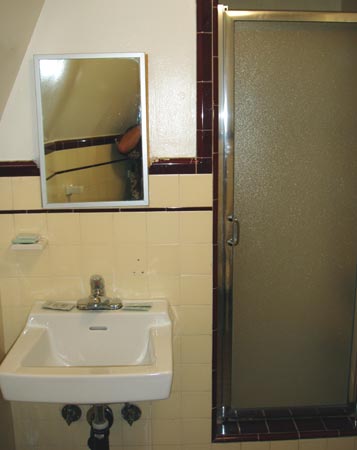
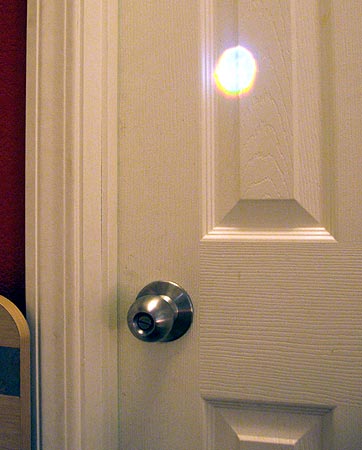
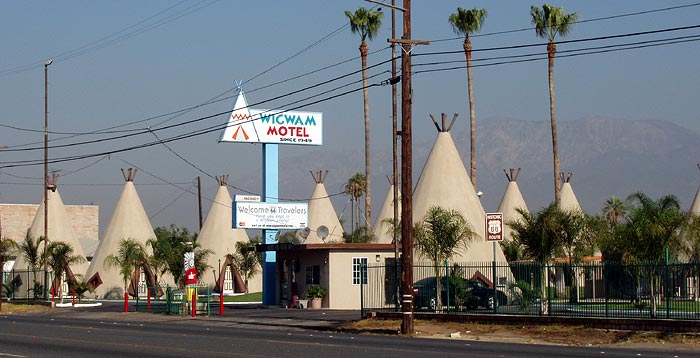
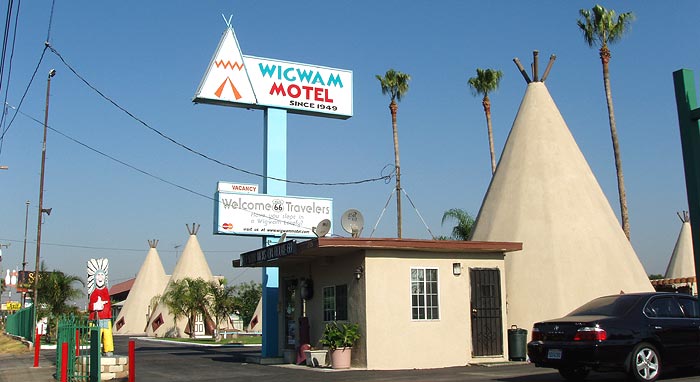
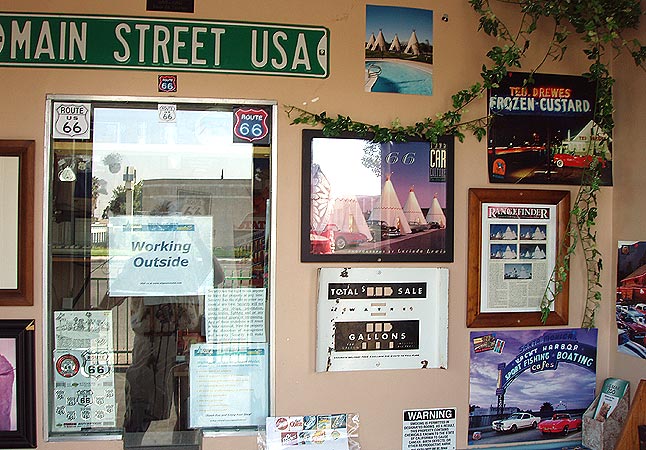
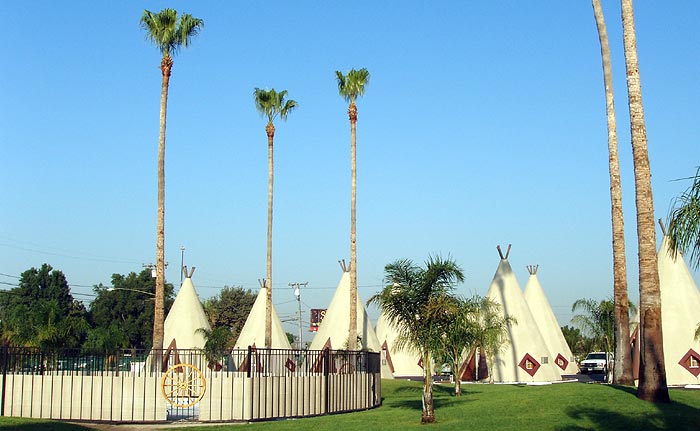
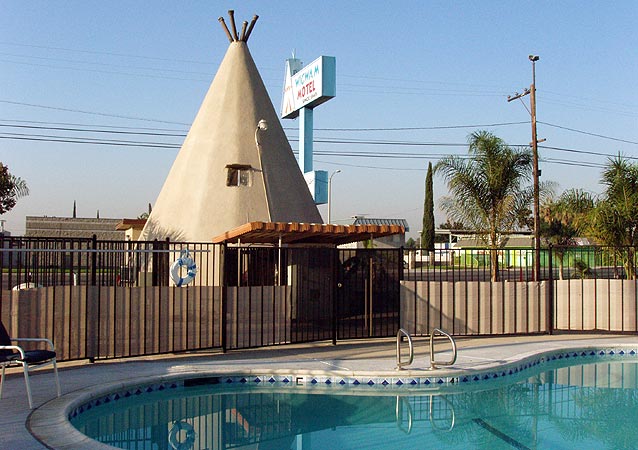
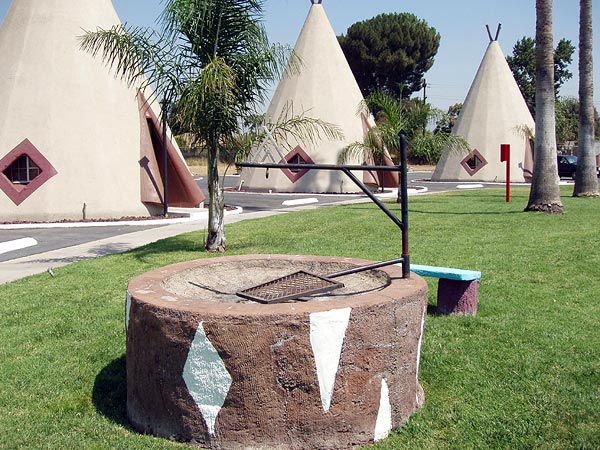
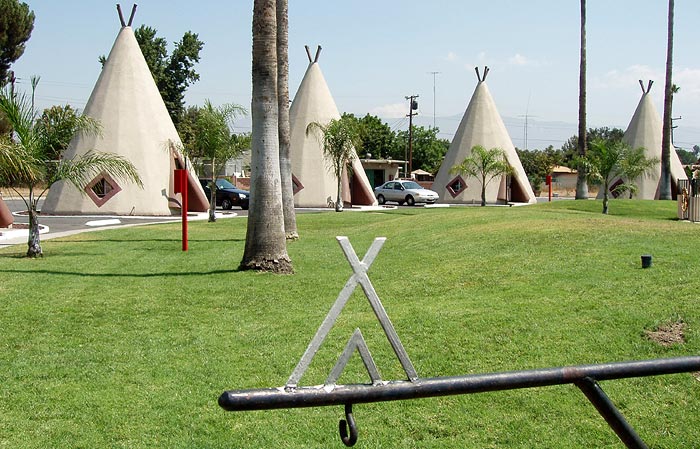
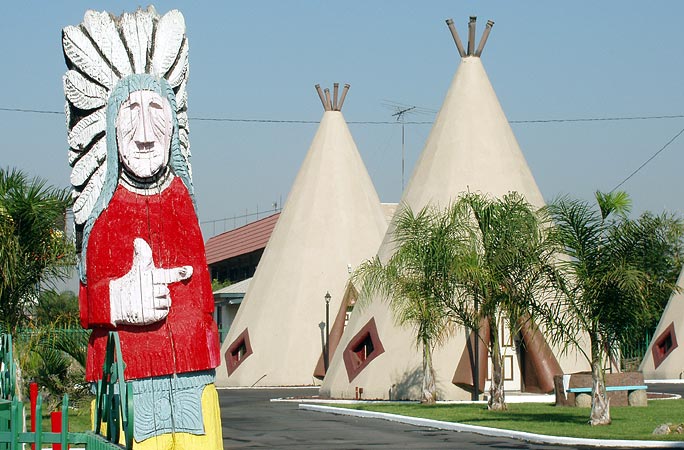
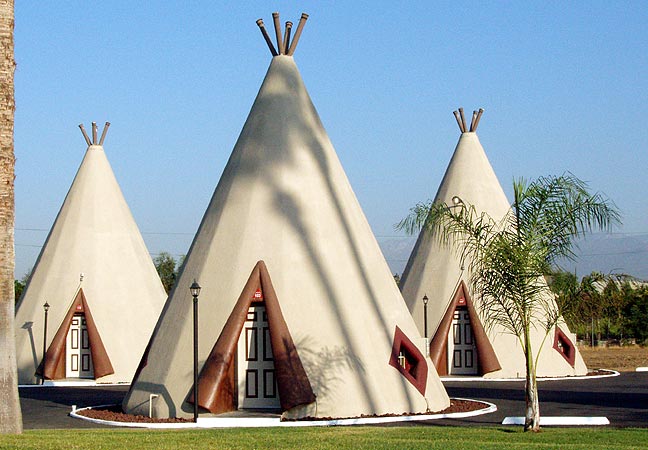
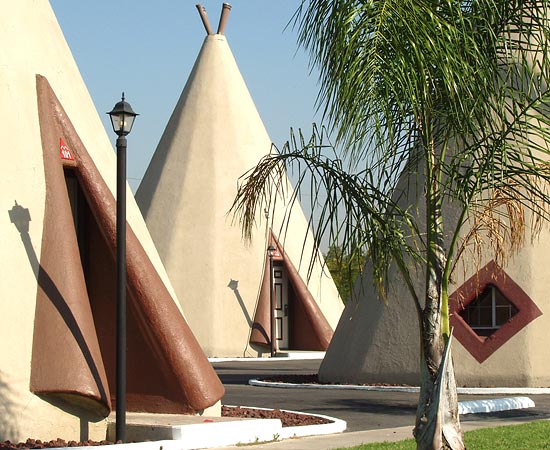
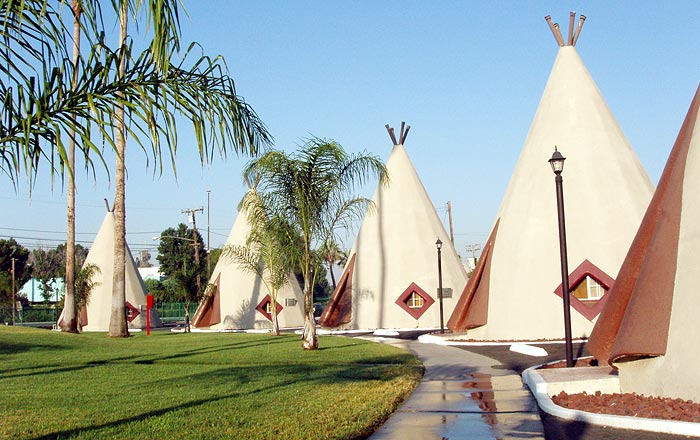
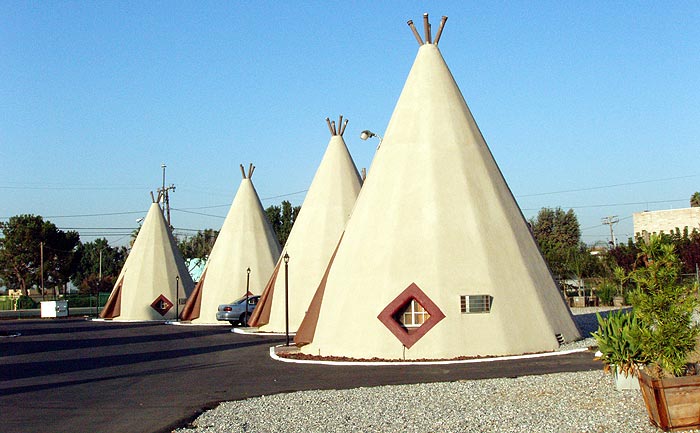
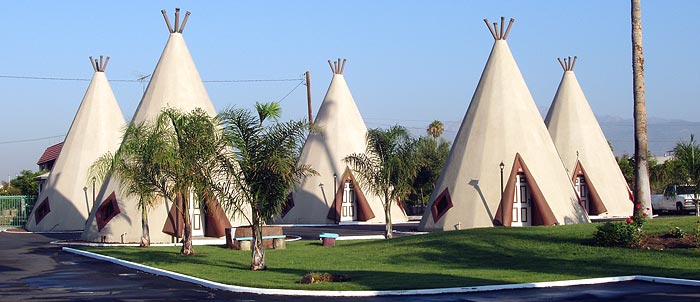
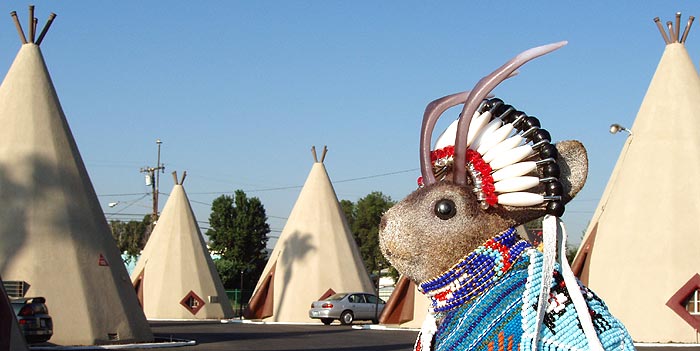
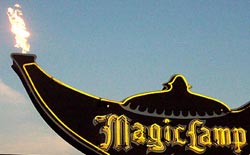
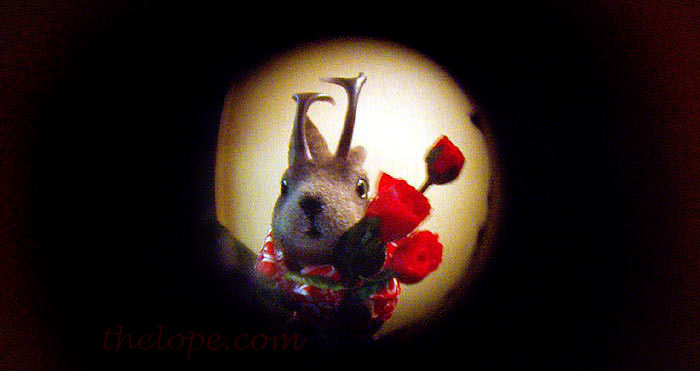
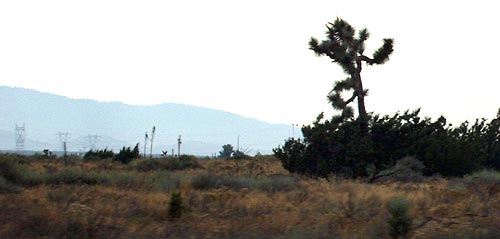
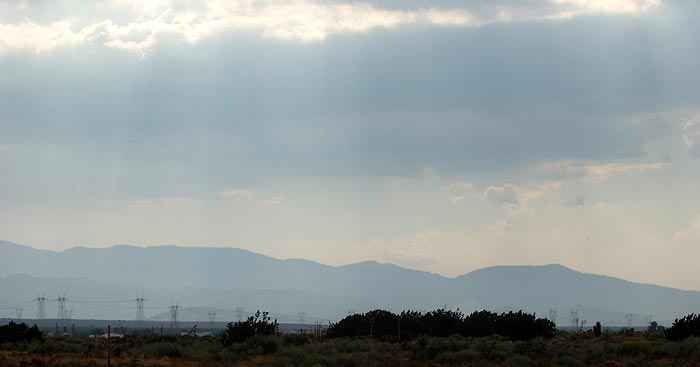
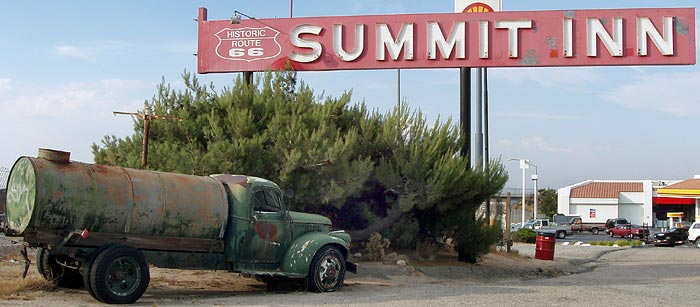
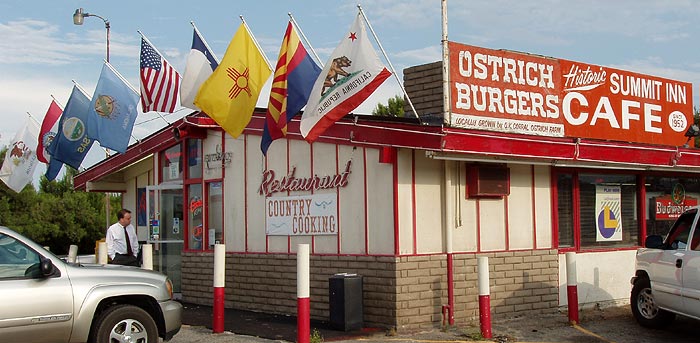
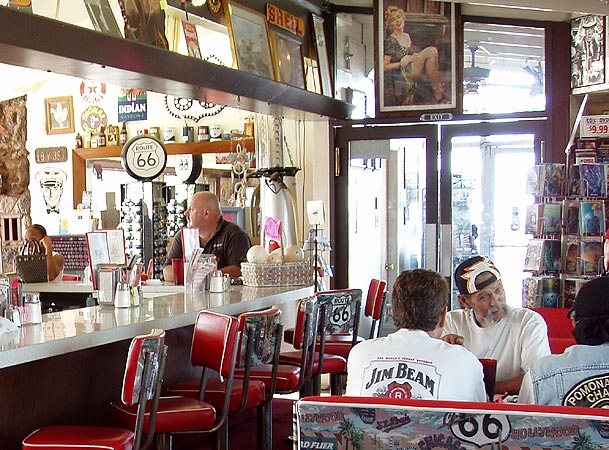
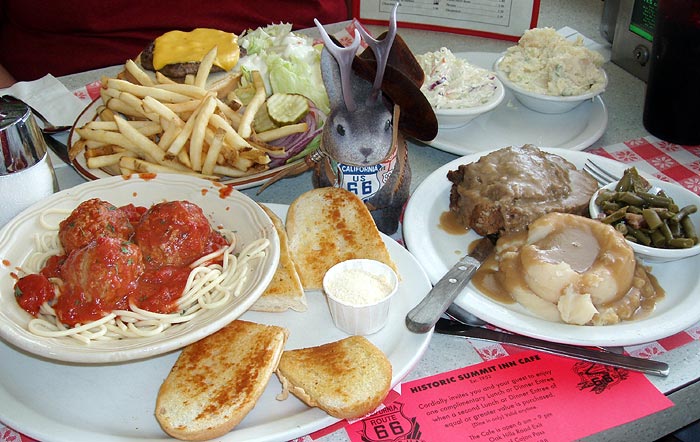
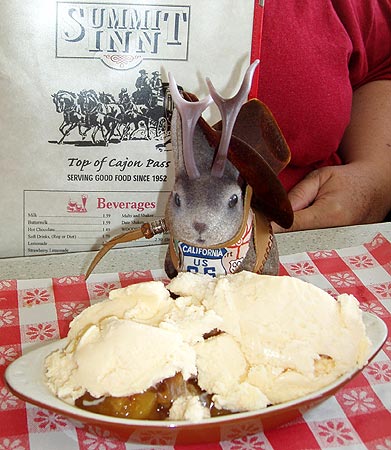
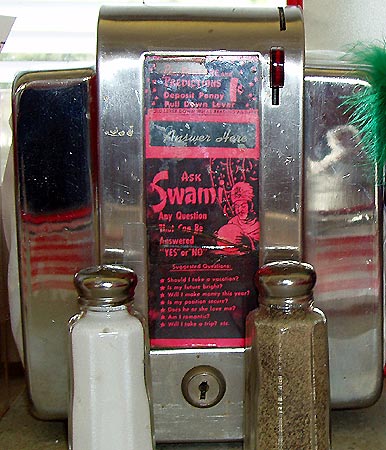
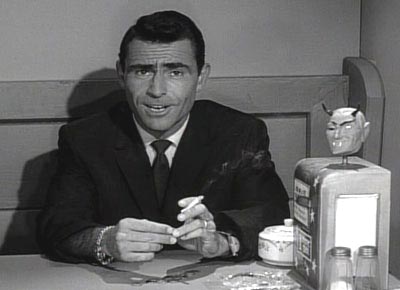
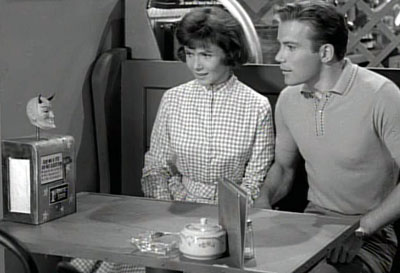
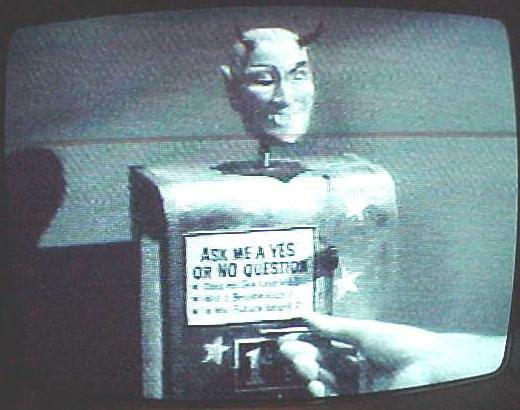
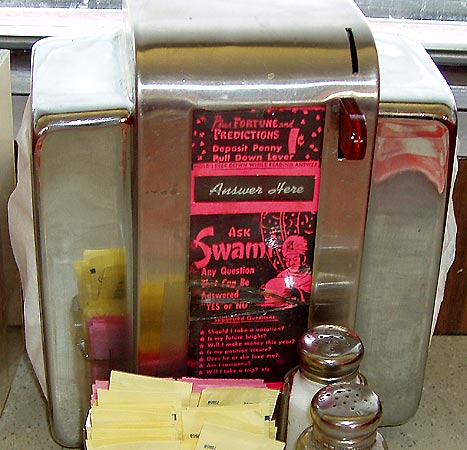
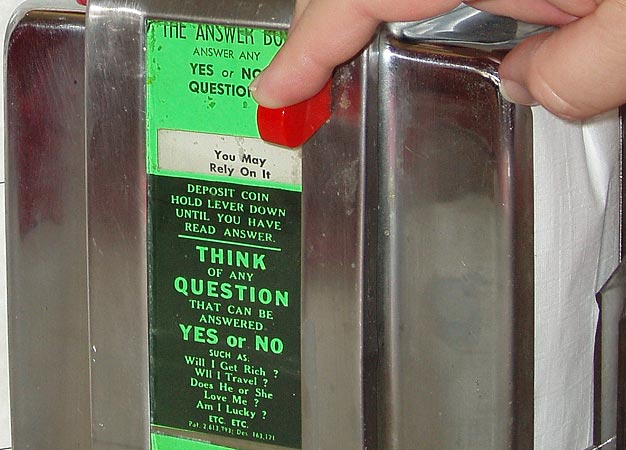
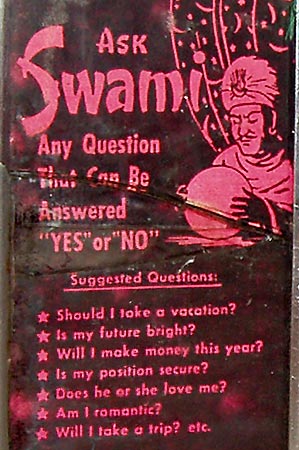
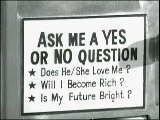
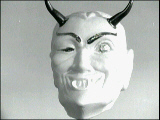
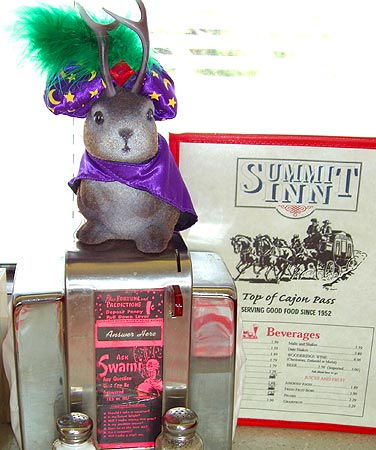


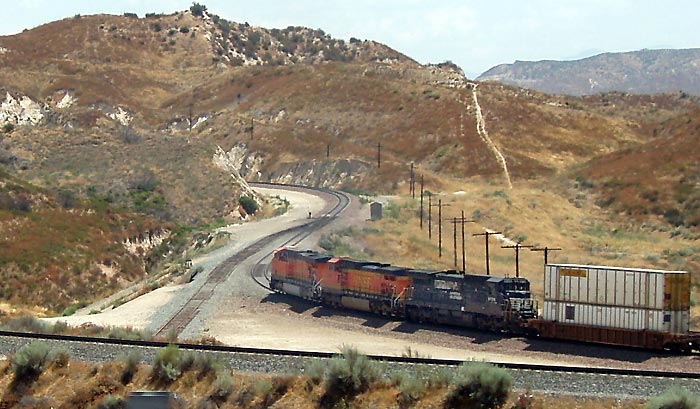

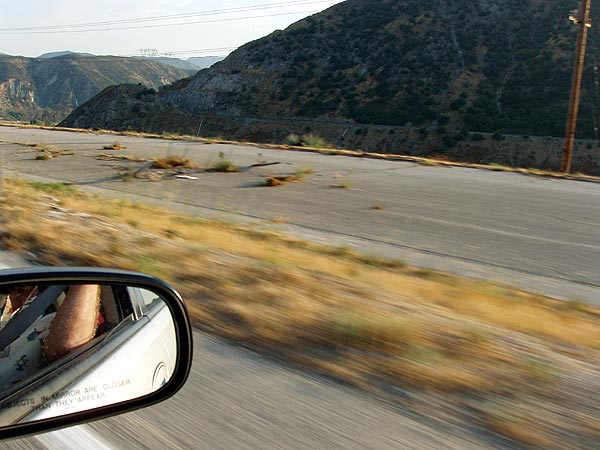
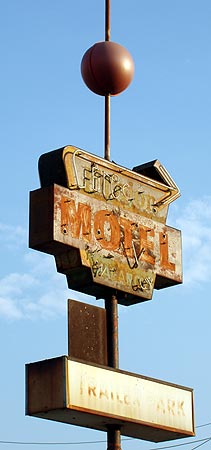
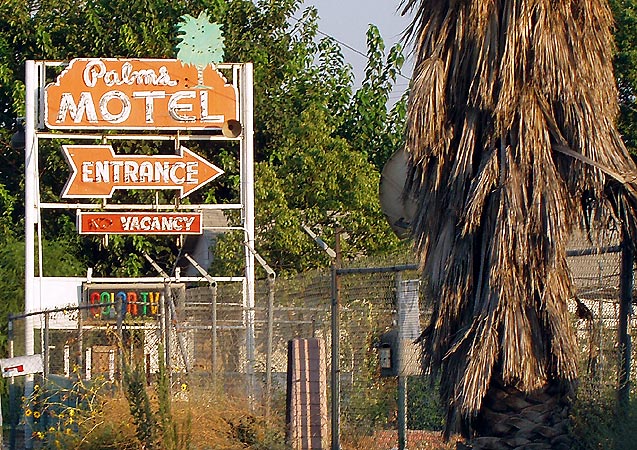
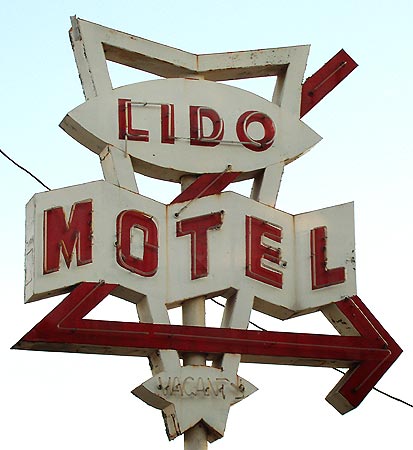
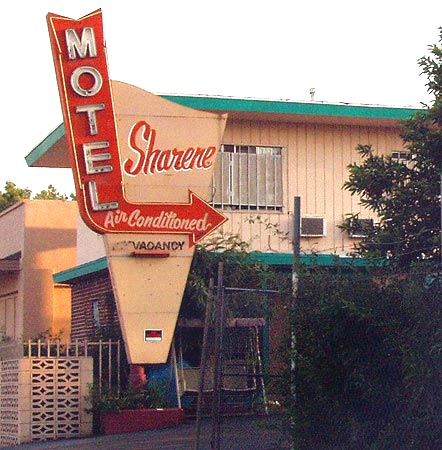
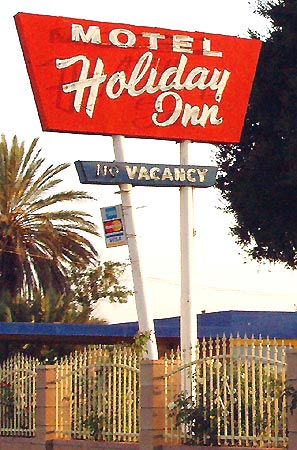
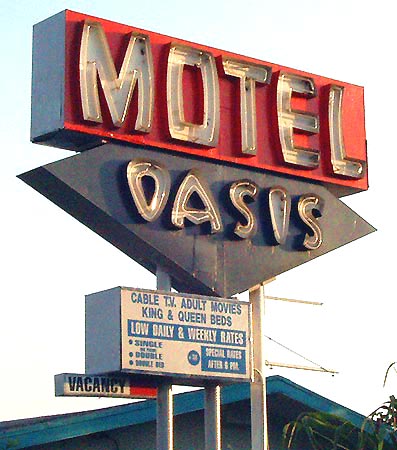

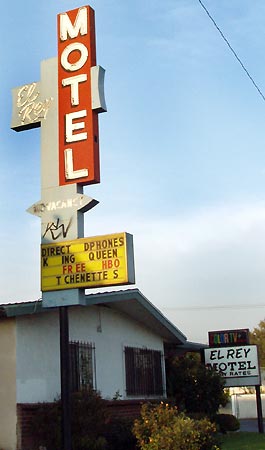
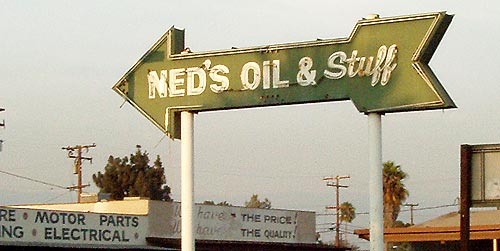
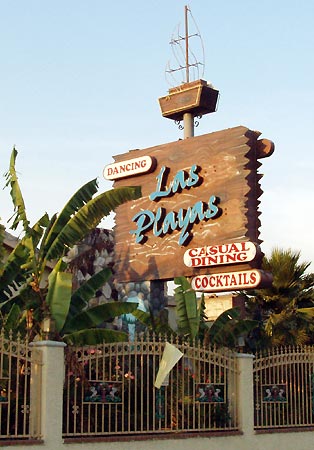
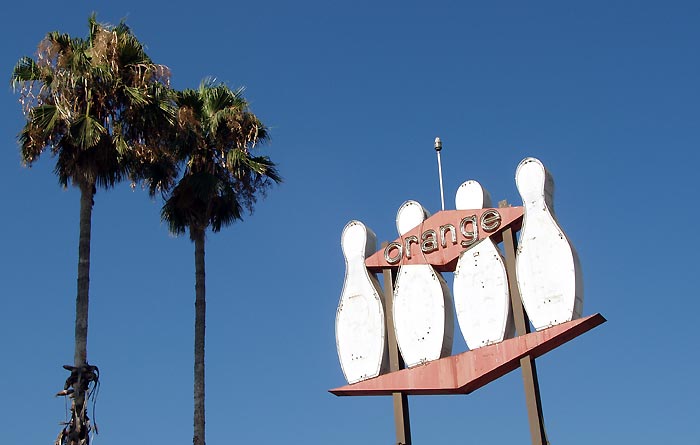
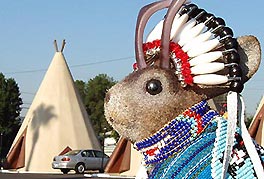
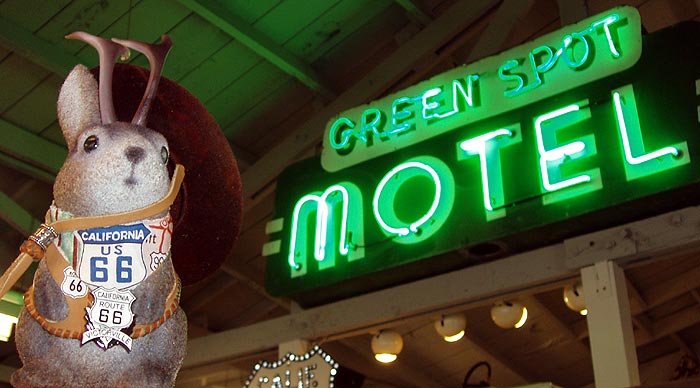
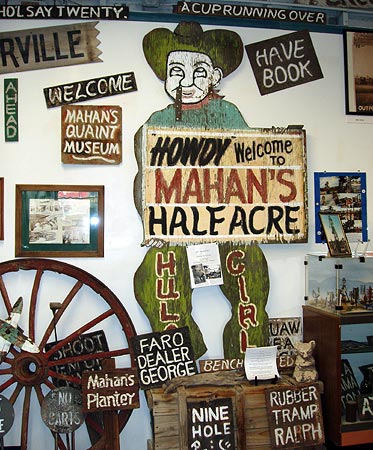
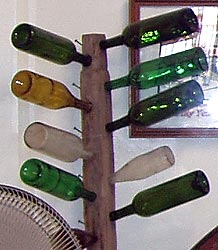
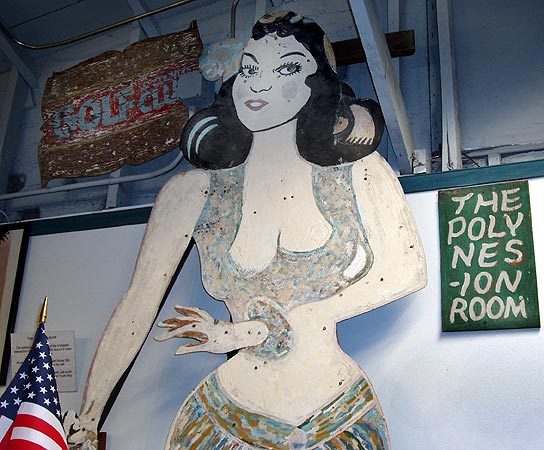
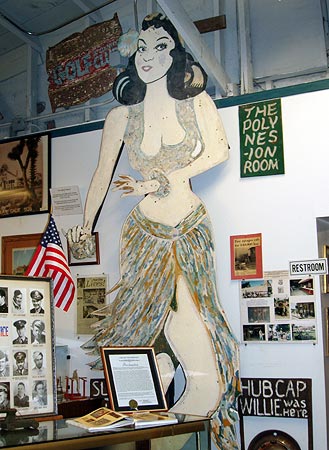
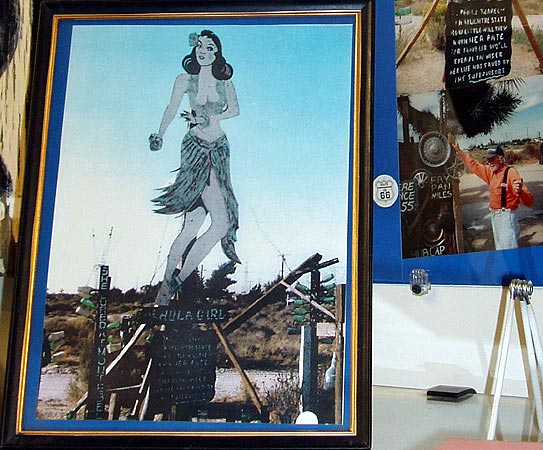
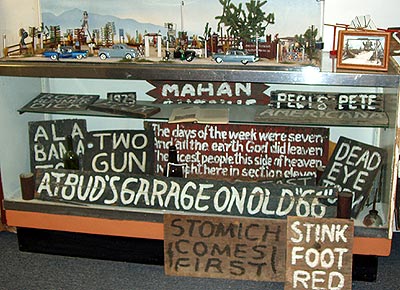
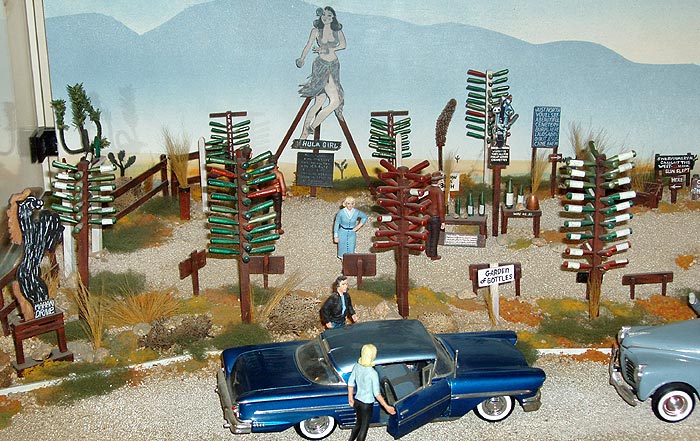
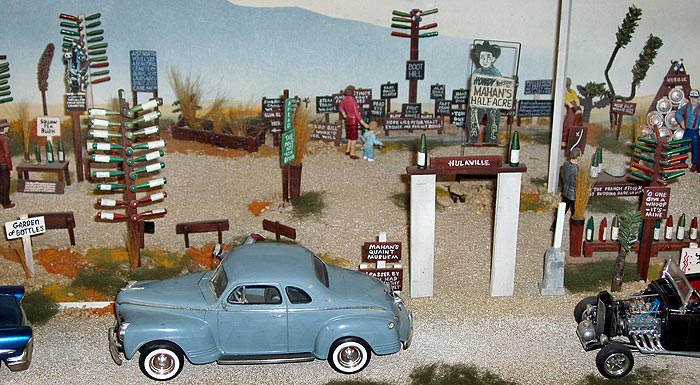
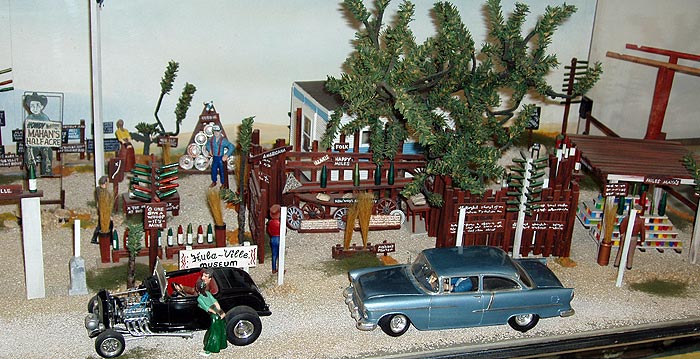
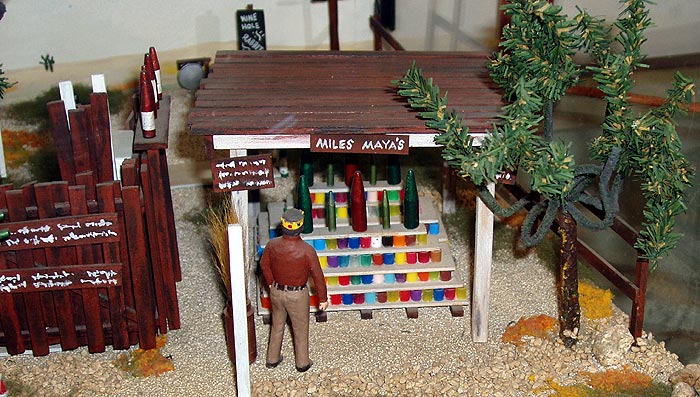
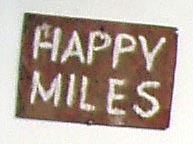
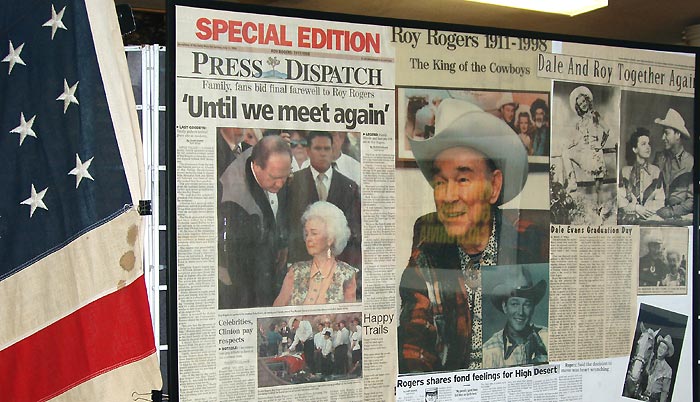
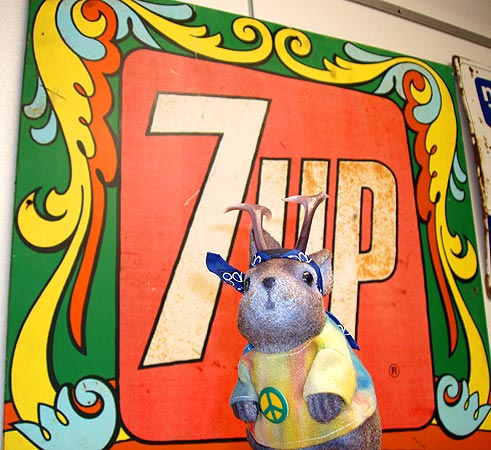
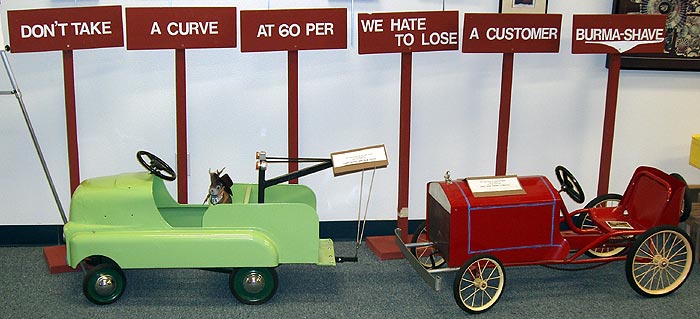
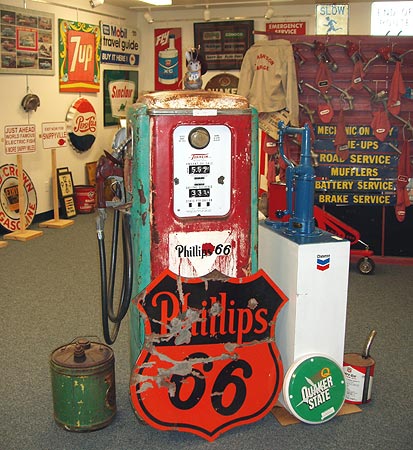
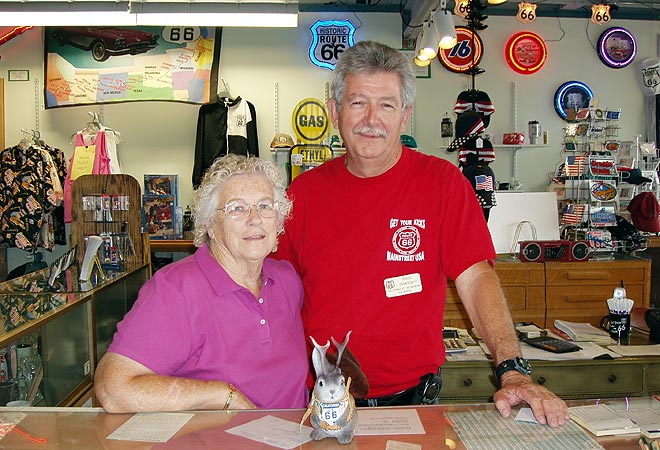
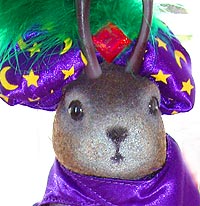
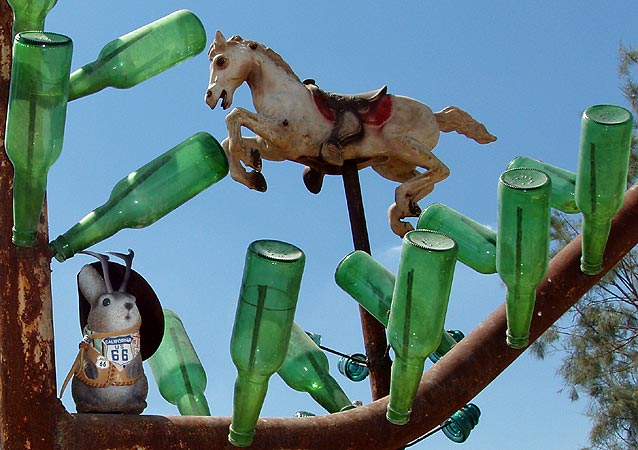
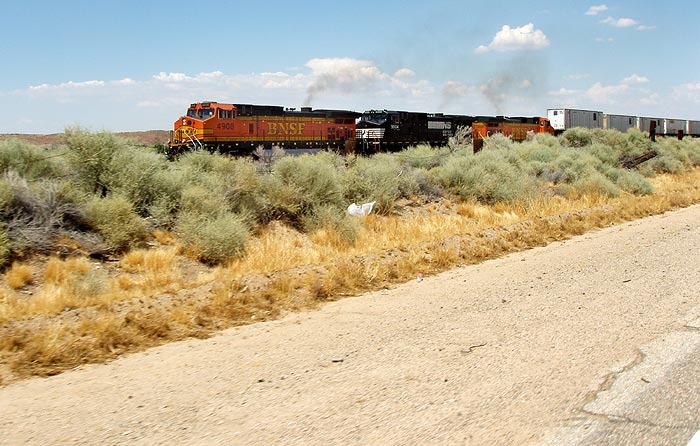
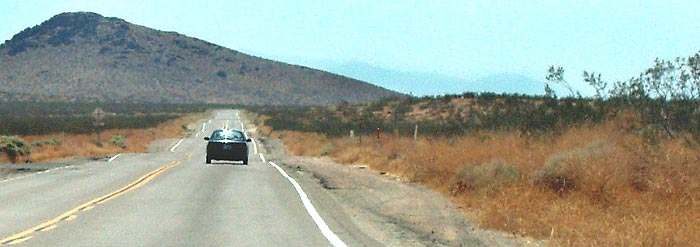
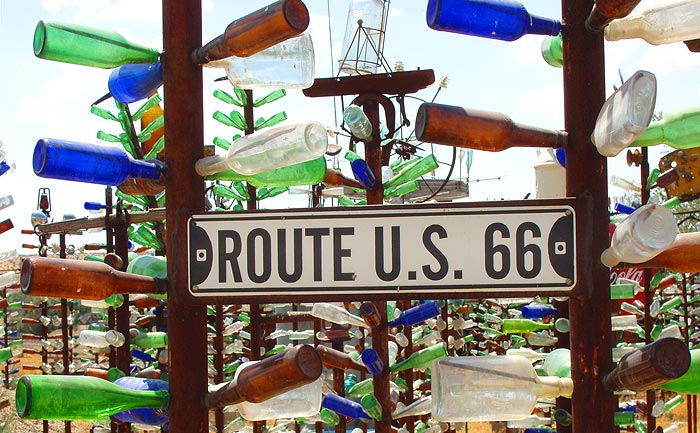
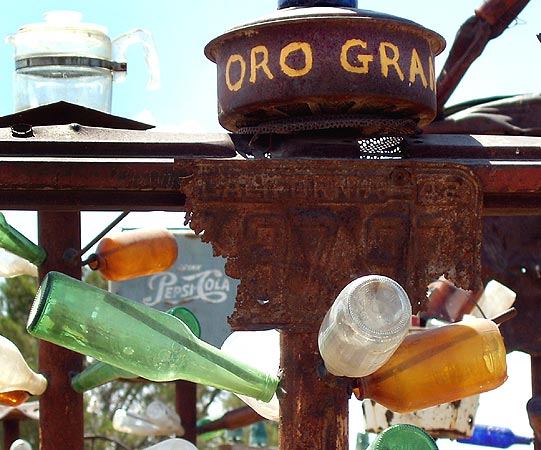
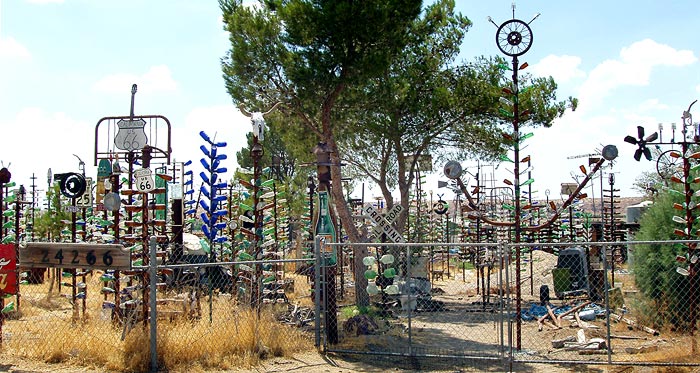
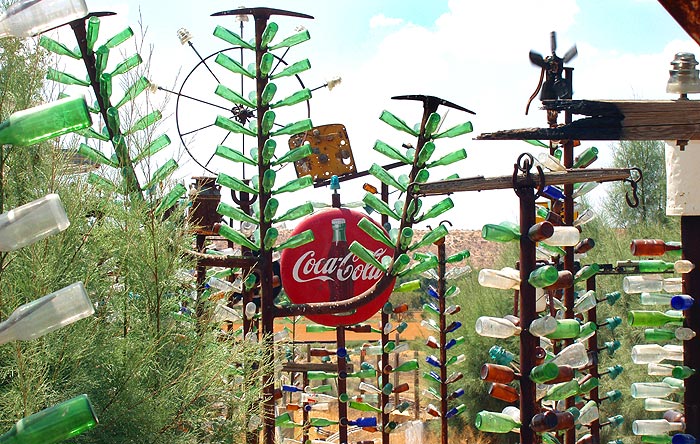
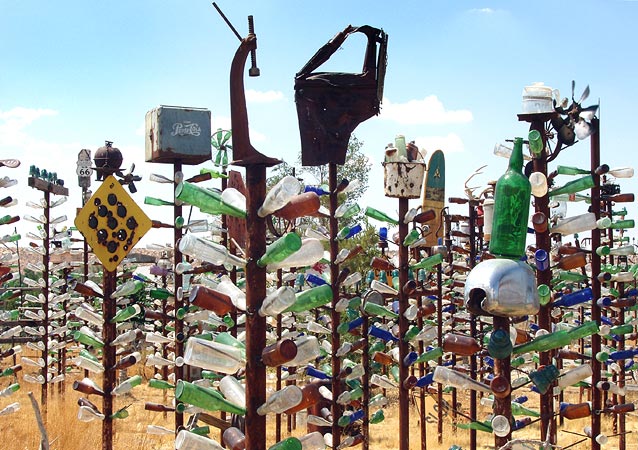
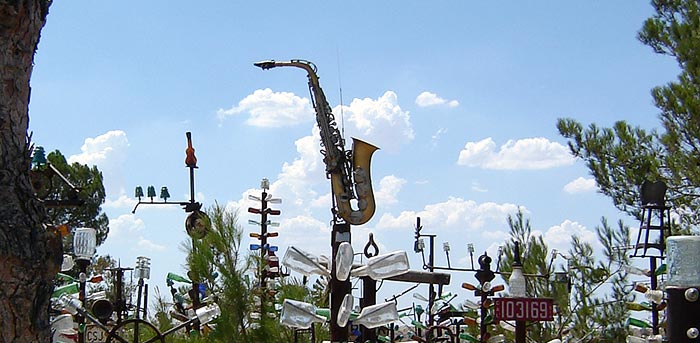
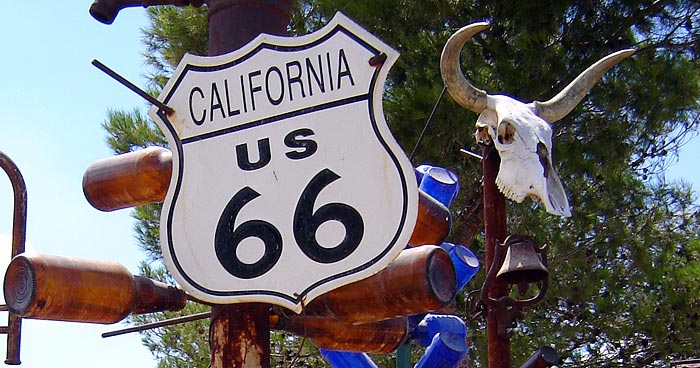
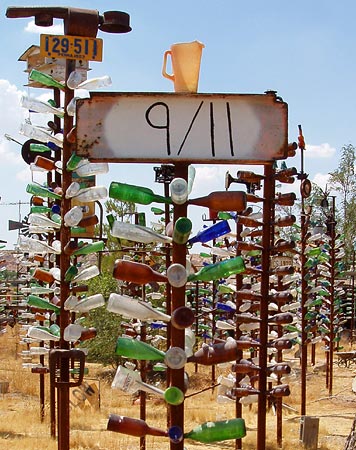
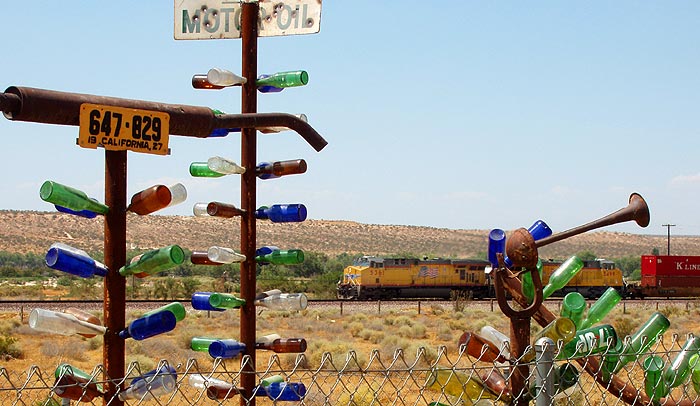
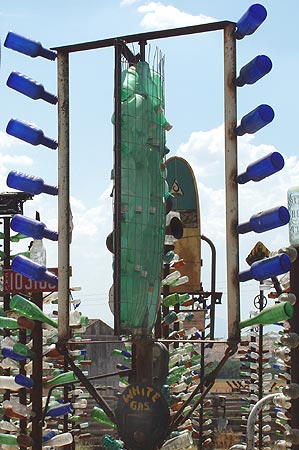
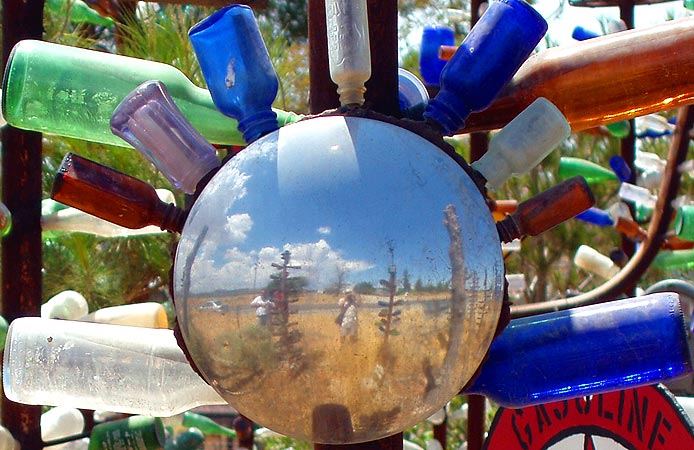
 The buildings pre-date Potapov's arrival and, according to a
The buildings pre-date Potapov's arrival and, according to a 